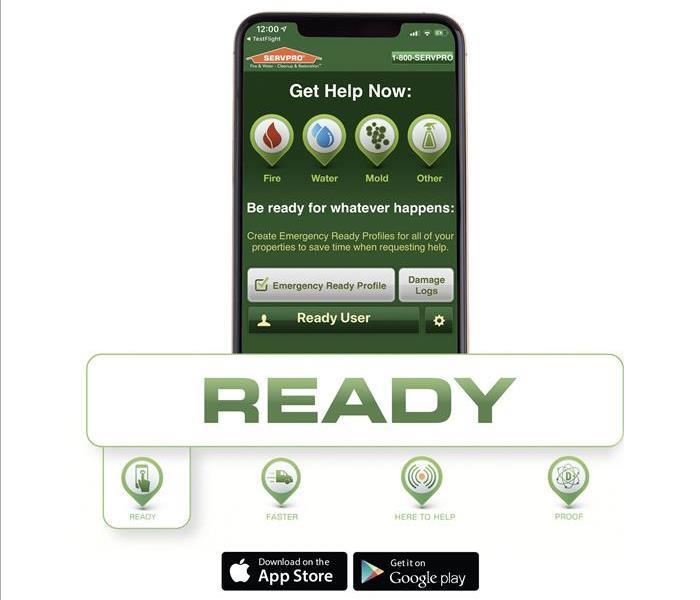Recent Storm Damage Posts
SERVPRO Makes Your Flood Damage Nightmare in Salem Short-lived
8/15/2022 (Permalink)
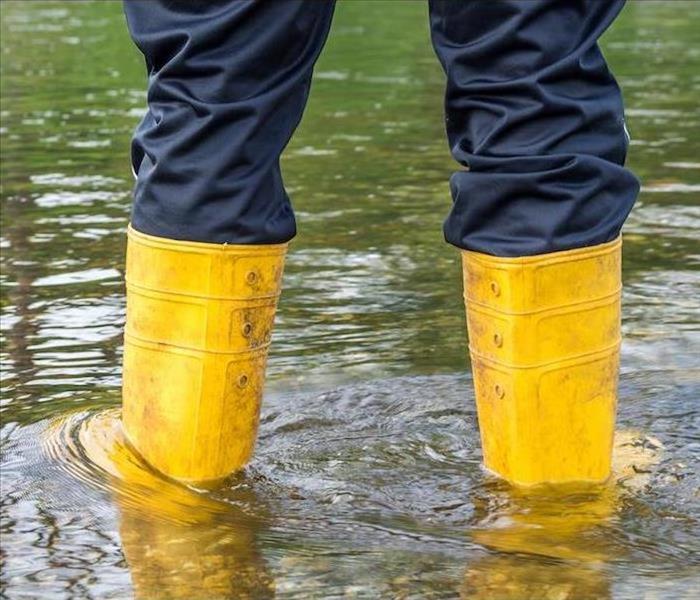 Flood damage restoration for your home needs to be handled by SERVPRO. Our team of experts are here to help.
Flood damage restoration for your home needs to be handled by SERVPRO. Our team of experts are here to help.
Restoration Starts after Flood Damage Mitigation
Flooding often seems like something that only happens to neighborhoods in other parts of Salem, but when it does happen to your family's residence, it can feel like a terrible nightmare. SERVPRO helps families recover by using specific steps that systematically decrease the intensity of flood damage.
To decrease flood damage's impact on your Salem residence and the personal property your family holds dear, SERVPRO begins with a rapid response. We work day and night to get families back in their homes and their lives back to normal.
Several major components must occur with flood damage restoration to make everything "Like it never even happened." These restoration phases include:
- Extraction and draining off of contaminated water,
- Rinsing with clean water,
- Decontamination of surfaces,
- Desiccation of the home's interior, and
- Rebuilding of your home's interior, as required.
Getting the water out of the residence often requires opening up enclosed compartments under cabinets and other spaces where water gets forced into and trapped. We use specialized equipment that helps us complete this step quickly and reduce the time your house remains exposed to stagnant water.
Once we have gotten the home free of contaminated water, we rinse surfaces with clean water, which removes particles that can cause mold damage or produce persistent foul odors.
We use spray-on decontamination agents for their uniform and easy application. We apply these at least twice during our work efforts on your home, providing a high level of protection while simultaneously removing any microbes that can later cause problems for your family.
We reduce problems with solid wood flooring and keep the warping of structural beams under control through highly controlled drying and desiccation.
Our building and reconstruction team handles wiring, plumbing, and much more. The support beams underneath removed drywall sections often dry square enough that we don't need to replace them. If required, though, SERVPRO is ready to perform the necessary work. For complex reconstruction, a third-party company consisting of a structural engineer can be brought in for consultation and direction.
Call (978) 586-2915 to speak to experienced restoration specialists at SERVPRO of Salem / Peabody / Marblehead after any disaster.
Reducing Costs with Flood Damage Restoration in Salem
6/18/2022 (Permalink)
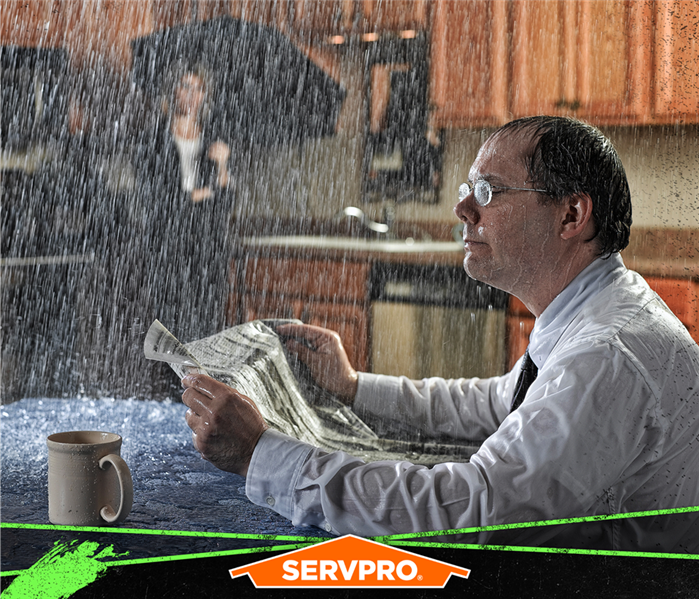 When stormwater rains into your Salem home, SERVPRO is Here to Help.
When stormwater rains into your Salem home, SERVPRO is Here to Help.
SERVPRO Handles Flood Damage in Salem Quickly and Efficiently
As a homeowner, it is smart to always have a checklist of things to remember or keep in mind in any emergency. Whether or not you live in a flood zone, preparation is critical should any Salem storms roll through and leave you with interior flooding. SERVPRO wants all area residents to be prepared and know how to get in touch with us for fast, reliable water removal services. Not only are we available 24/7, but We’re Faster to Any Size Disaster.
Flooding impacts countless US homeowners each year, leading to billions in damage. Should your Salem home have flood damage after a storm, remember that time is of the essence. SERVPRO works quickly to address toxic floodwaters, reduce mold growth, and save your valuable items inside the home.
These are some things to remember if your property takes on floodwater:
- Wood and porous items like furnishings, rugs, and walls can take on water when submerged in floodwater.
- Even when cleaning is performed top to bottom, moving too quickly and leaving behind moisture increases the risks of pests, continued deterioration, and black mold growth.
- Most exterior flood water from a storm entering your home brings pesticides, vermin, feces, and other hazards, so it is best to let skilled restoration technicians tackle the cleanup.
SERVPRO comes prepared
If you have a leaking roof from storms or broken windows, our tarping and board-up services help protect your interior as the rest of your restoration takes place. Our crew also brings generators if they are needed should your power be out. We carefully assess all possible hazards and look at structural integrity to determine how to proceed. Once we have a plan, we begin water removal services, drying, and look for hidden moisture using:
- Borescopes
- Thermal imaging technology
- Moisture meters, sensors, and detectors
We ensure impacted areas of your home are dry and disinfected so there is no lingering trace of storm flood damage. Call SERVPRO of Salem/Peabody/Marblehead when you require assistance at (978) 744-4545.
Priorities in Flood Damage Restoration of a Home in Peabody
5/30/2022 (Permalink)
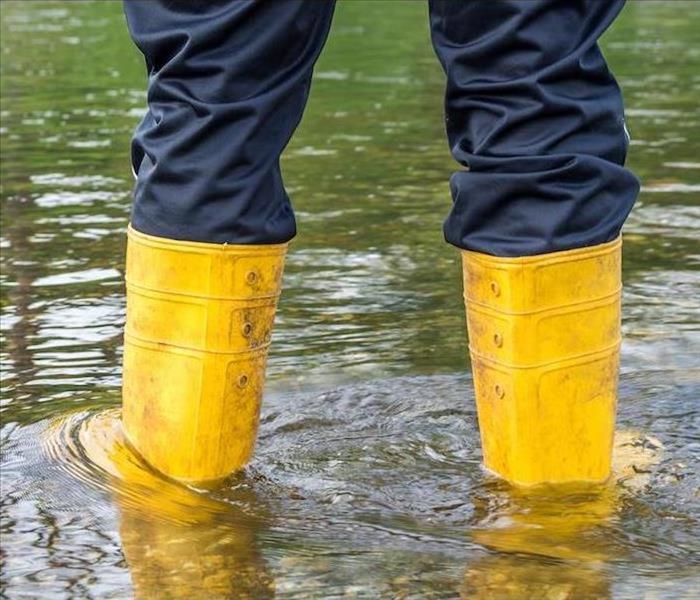 Storm and flood damage restoration is no DIY project. Call SERVPRO for the expert service needed for your home.
Storm and flood damage restoration is no DIY project. Call SERVPRO for the expert service needed for your home.
SERVPRO Guides Peabody Homeowners Facing Flood Damage
A storm in Peabody can cause water damage and leave the homeowner in need of professional services. The priority when a home is affected should always be the safety of all, including moving out your family and pets until the safety of the house is verified. Following the initial reaction to the disaster, establishing priorities may be a little more complicated. If stormwater, with its pollutants and debris, makes its way into your home, time is not on your side. It would be best if you moved as quickly as possible to prevent significant secondary damage, and only a certified team of experts can guide you through the process.
Certified flood damage technicians in Peabody are readily available when you call SERVPRO. Our team is an expert in the water damage remediation and restoration field, and we take a multi-pronged approach to restoring your home and minimizing your loss. Thanks to our industry-grade equipment and expertise, we can simultaneously take steps to repair and restore while discarding unsalvageable items and addressing lingering odors. Through the process, we communicate with you continuously so you always know and understand what is happening and the sequence of events that will lead to your home’s complete restoration.
Sometimes our SERVPRO clients are surprised by the depth of the services we provide. Aside from water extraction and drying, you can count on us for the following-
- Disinfection and application of anti-microbial solutions
- Drywall repair
- Controlled demolition and move-out services as needed
At SERVPRO of Salem/ Peabody/ Marblehead, excellent customer service joins industry expertise and advanced tools to provide the latest in water damage remediation. Call us at (978) 744-4545 and let us leave your home “Like it never even happened.”
Call SERVPRO for Flood Damage Repairs After Storms in Salem
4/29/2022 (Permalink)
 Storm and flood damage repair is a job for SERVPRO. Our technicians are ready at a moment's notice for fast and immediate service for your home.
Storm and flood damage repair is a job for SERVPRO. Our technicians are ready at a moment's notice for fast and immediate service for your home.
Need Flood Damage Repairs and Restoration After a Storm in Salem – Call SERVPRO
After a bad storm in Salem, tree limbs are down on your roof, windows are blown out, and your home is flooded with water and debris. In addition, the power is out, and even cell phones are not working. These situations are dangerous to residents. Electrocution, slips and falls, and tree limbs are hazards for everyone. Most people find these situations very overwhelming, and it isn't easy to know where to begin.
SERVPRO provides repair and restoration services to residents of Salem for flood damage to their homes after a storm. We can help with all aspects of the damage done to your home, including providing temporary power to run pumps to clear water, high capacity vacuums to remove water from carpets, high capacity dehumidifiers, and air movers.
Damaged windows are boarded up to prevent additional rain and animals from entering your home. Tarps are also spread over your roof to prevent rain from penetrating through roof punctures. We help manage the immediate needs after a storm. Our priority is to begin cleaning and drying your home to prevent secondary damage caused by high moisture levels that lead to structural issues and significant mold conditions. Mold can cause health effects and further damage your contents. Your contents can be cleaned, dried, and moved to a safe staging area for later return to your home.
Our SERVPRO team can also assist with repair and restoration services in addition to our standard services offered to our clients:
- Emergency services water damage repairs
- Water clean up, removal, and drying
- Repairs to leaking roofs caused by storms
- Basement flooding clean up, including debris removal, sanitation, and drying
Call the flood damage, repair, and restoration experts at SERVPRO of Salem / Peabody / Marblehead and nearby areas for storm damage restoration assistance. We can help 24/7. Call (978) 744-4545.
Is Your Salem Home At-Risk for Common Winter Water Damage?
12/20/2021 (Permalink)
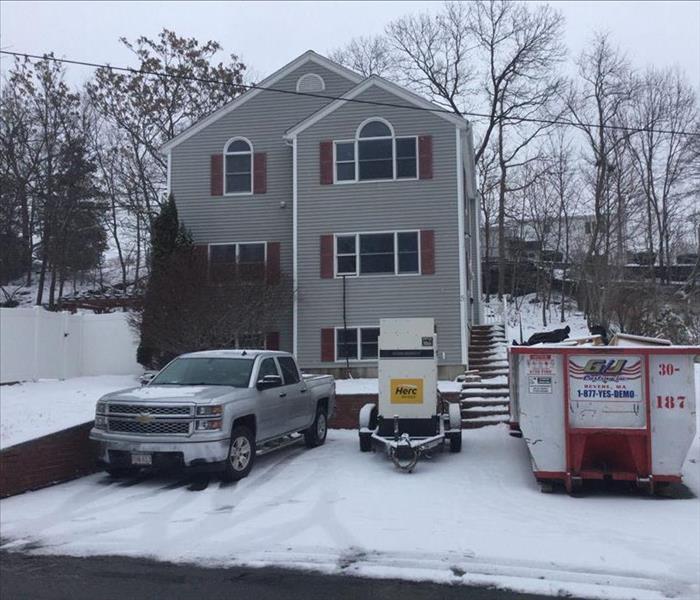 SERVPRO says to winterize your home in Salem to protect against frozen pipes and ice dams. Nor'easters can be fierce.
SERVPRO says to winterize your home in Salem to protect against frozen pipes and ice dams. Nor'easters can be fierce.
It is important to understand the ways winter conditions threaten Salem homes
The winter months can introduce several threats and adverse circumstances for your home. Cold snaps and heavy snowfall can each present their unique challenges for homeowners, including the possibilities of costly, destructive disasters. Our SERVPRO professionals understand the urgency of these situations and can help with effective mitigation if preventative measures are not successful.
Are Frozen Pipes Possible?
Between frozen pipes and ice damming Salem homes could experience, water damage can occur from several catalysts. The freezing of the plumbing system creates a rapidly worsening condition that causes a buildup of pressure in aging pipes. Despite the damage that these situations can cause, some preventative measures and efforts can reduce the possibilities of costly pipe bursts. Some of these include:
- Running Water – Keeping a small amount of water movement in the pipes makes it harder to freeze and expand. Often, faucets directly connected to sensitive lines should be left running at a trickle during periods of lower temperatures.
- Sufficient Insulation – Cold weather can quickly expose insufficiencies in pipes' insulation and plumbing portions. Ensure that susceptible areas have adequate coverage.
- Circulating Warmth – It is important to ensure that the household is sufficiently heated during the worst of winter weather. Cold snaps are not the time to push to save on your utility bill.
What is Ice Damming?
Ice damming is another destructive phenomenon that can occur during the winter months. Ice building along the eaves of a roof prevents snowmelt from reaching gutters, and the water instead backs into the attic. While preventative measures like heated cables can reduce the possibilities of this buildup, they can be costly when it occurs.
SERVPRO is Always Here to Help
If pipes do freeze, expand, and rupture, you can count on the fast response of our experienced professionals to help. Likewise, we have trained technicians capable of handling storm damage resulting from ice damming and roof degradation. We can mitigate loss and work to provide a full-service solution to return your home to preloss condition.
Winter weather can be destructive to area homes. Let our SERVPRO of Salem / Peabody / Marblehead make it "Like it never even happened." Call us today at (978) 744-4545.
How Can Salem Flood Damage Be Removed Without a Sump Pump?
11/19/2021 (Permalink)
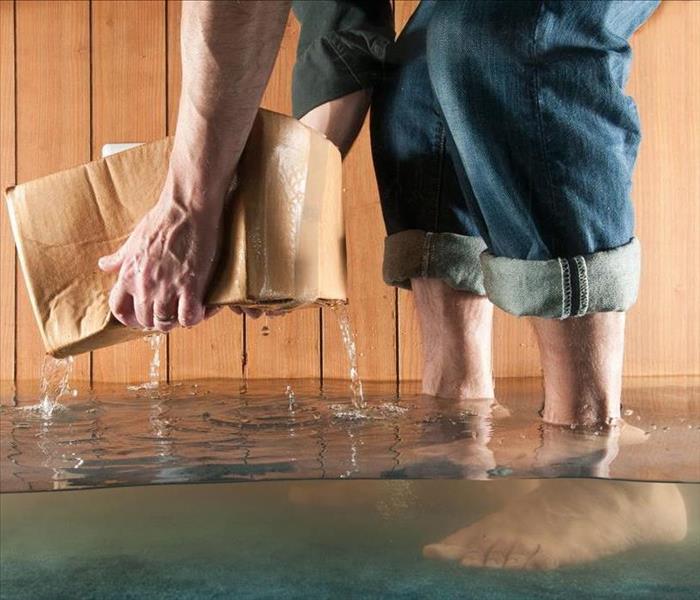 Flooding can quickly cause water damage. Contact SERVPRO for water removal and remediation services.
Flooding can quickly cause water damage. Contact SERVPRO for water removal and remediation services.
SERVPRO has Professional-Grade Extraction Equipment to leave Salem Properties Water-Free
Not every basement in Salem has a sump pump, and this can lead to water damage building up quickly to standing water situations when heavy rains come through the area. Due to the slab substrate that makes up the flooring in most basements, there is nowhere for the water to drain off, and worse, the water may contain sewage or other types of water-borne hazards.
Flood damage cleanup in a Salem basement can present multiple hazards. Groundwater can bring chemicals, debris, and even sewage into the home. Contact, including aspirating water vapor, should be avoided for all household members, including pets. Handing off the floodwater removal to a professional restoration company is a smart move to make the water removed safely. The home gets sanitized for reuse by the family without the worry of lingering problems.
Upon arrival, SERVPRO technicians routinely test the standing water to determine if any harmful elements are present. This lets the technicians know the types of biocides or antifungal treatments to make the water safer to handle during extraction.
While debris is easy to spot in standing water, it is not possible to see harmful bacteria or microbes by looking. SERVPRO technicians test the water on arrival to determine the presence of toxic elements and apply proactive water treatments to make the water safer to handle. The use of professional water removal equipment makes a difference in the outcome because:
- Scoping with moisture detection equipment to find all areas of migration
- Drying phase using professional drying tools
- Disinfection and proactive treatments for both odor and mold
SERVPRO of Salem / Peabody / Marblehead at (978) 744-4545 brings professional flood damage restoration services to Salem properties to make the water damage in basements, "Like it never even happened."
Why Does Flood Damage in a Peabody Home Sometimes Contain Sewage?
10/22/2021 (Permalink)
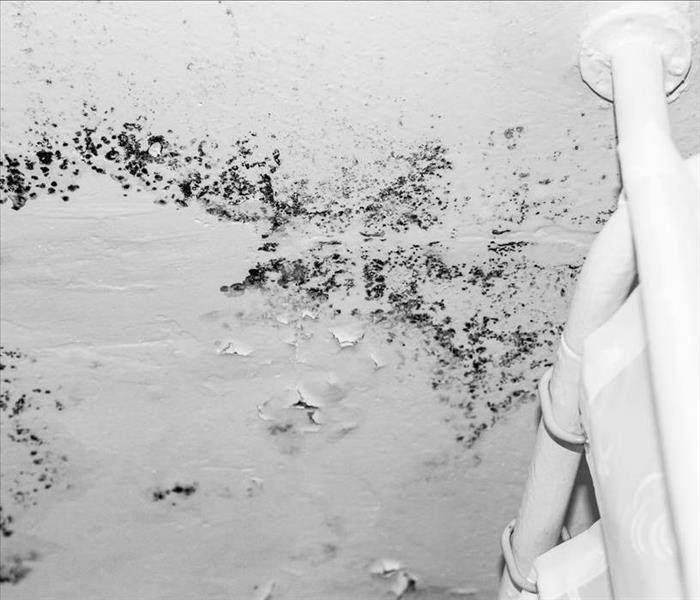 Mold damage remediation by SERVPRO IICRC certified technicians are second to none. We are fast to your rescue.
Mold damage remediation by SERVPRO IICRC certified technicians are second to none. We are fast to your rescue.
SERVPRO Techs Have the Professional Training and Equipment to Handle Dangerous Water Damage in Peabody
Water damage in a Peabody home is stressful enough without the knowledge the water may also contain sewage. When heavy storms hit the area, sometimes the amount of rain is too much for the sewer systems to handle, and the water begins to back up into homes.
When a Peabody home has flood damage that includes sewage, it is crucial that a professional company handle the extraction and drying of the property. The entrance of the water can be sudden as the water infrastructure gets overwhelmed and the mainline backs up into homes and businesses. Another cause is blocked pipes from leaves and debris. The water usually first affects the houses' lowest levels, such as basements, and moves upwards through the home as pressure forces the sewage-tainted water back through the pipes.
What Should Homeowners Do When Faced With Sewage-Tainted Floodwater?
There will be a very small window for moving out items or getting people and pets to safety once the water enters the drainage system in the home. Other actions to take include:
- Turn off electricity to eliminate the potential for shock
- Get important papers or valuables out of the flooded area if it is safe to do so
- Bring in professional restoration services for the safe cleanup\
What Makes Floodwater Dangerous?
The water that enters a home through a sewer backup can contain many issues, including pathogenic elements, bacteria, and even sewer gases that can be harmful to aspirate. SERVPRO technicians work safely by wearing full-body personal protective equipment (PPE) that includes eye protection and respirators.
SERVPRO of Salem / Peabody / Marblehead at (978) 744-4545 has trained, certified technicians ready to come to Peabody properties to address flood damage.
Are There Ways to Control Flood Damage In Peabody Properties?
8/27/2021 (Permalink)
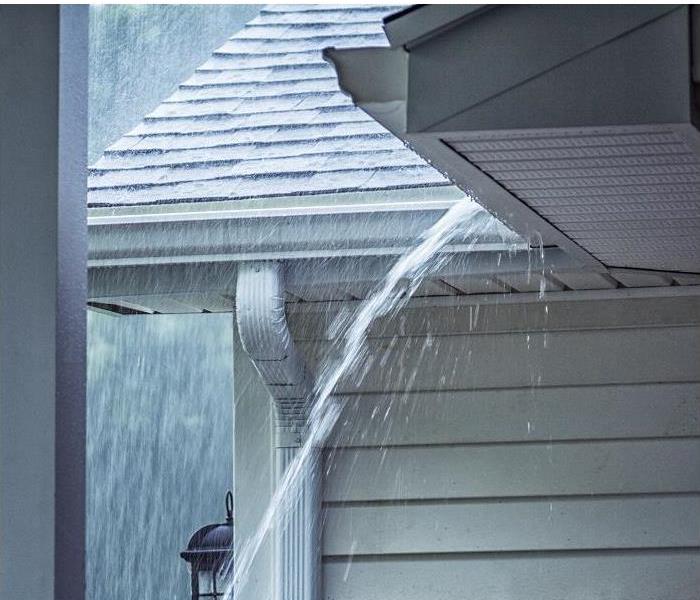 Summer storms can cause flooding. SERVPRO always has a team standing by to restore your home.
Summer storms can cause flooding. SERVPRO always has a team standing by to restore your home.
SERVPRO Performs Appropriate and Timely Water Damage Repairs Limiting the Damages from Flooding
Storms overwhelm properties with tremendous forces such as fast-moving waters and high winds, resulting in immense damages. Even worse, most of the losses may happen within minutes or hours. Despite this, limiting the level of damages these incidents leave at your Peabody home is still possible.
Controlling flood damage in your Peabody house means identifying issues likely to develop later after the initial water intrusion, wind, or damage from heavy debris. Using restorative approaches that do not harm the property is also a way to exert the necessary control. It is easier to achieve these and other goals with professional assistance from SERVPRO.
Professional flood management covers various aspects, including:
- Rodent clean up services
- Biohazard remediation
- Ceiling repairs from water damages
- Cleaning up after a sewer backup
A flooding incident creates various complications that can worsen outcomes, including:
- Severe contamination
- Microbial growth
- Over wetting materials
- Deep soiling
An issue like microbial growth involves microorganisms like bacteria and fungus, which thrive especially in wet environments. When our SERVPRO technicians expedite water removal or set up dehumidifiers at the loss site to keep relative humidity levels below 60%, it is possible to limit the resulting damage.
People or small animals can also vandalize the loss site after it is hit by flooding. Our SERVPRO teams take protective steps such as boarding up exterior openings, thus keeping all vandals out.
Timely action from SERVPRO of Salem / Peabody / Marblehead can significantly impact the outcome of flood damage incidents. Call us at (978) 744-4545. We’re Faster To Any Size Disaster.
What Can Be Done About Storm Debris in a Peabody Basement?
8/5/2021 (Permalink)
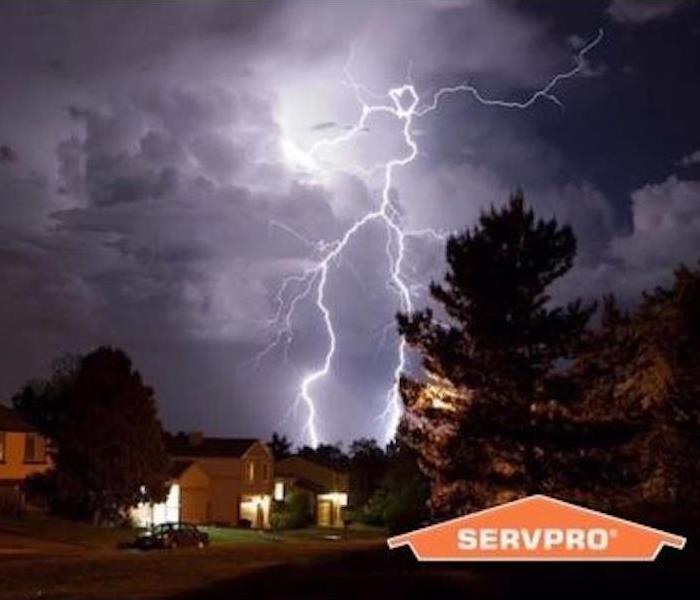 Homeowners have to deal with many things which may include storm damage. SERVPRO is available 24/7 to assist with remediation services.
Homeowners have to deal with many things which may include storm damage. SERVPRO is available 24/7 to assist with remediation services.
SERVPRO Crews are Experts at Mitigating Flood Damage in Peabody
Summer storms bring flooding that can wreak havoc and damage your home. When that happens, you need emergency services for water damage ASAP. SERVPRO is ready to help.
Dealing with Debris in Your Basement
When floods surge through Peabody homes, the flood damage carries debris, contaminated water, and silt. You can find everything from tree limbs to dead animals floating in the water. There are also contaminants such as bacteria and waste material. But our IICRC technicians know just what to do to remove the muck and mire. Flood restoration services include:
- Utilizing trash pumps that can remove debris-filled water
- Mucking out the mess with rakes and shovels
- Employing other water extractors as needed
- Spraying the area with EPA approved disinfectants
- Properly disposing of all contaminated material
- Drying the home with commercial air movers and dehumidifiers
Returning Your Basement to Pre-Loss Condition
Once the water, dirt, and debris get removed from your basement, we start a more precise cleanup. Certain things cannot get cleaned if they have contact with black water. This includes things such as mattresses, carpets, and upholstered furniture. We attempt to restore everything we can, as it is generally more cost-efficient than replacing items. Our services include:
- Basement flooding cleanup
- Water removal services
- Sewage cleanup
- Water damage remediation
- Ceiling repairs from water damage
If you need assistance with flood damage, contact SERVPRO of Salem / Peabody / Marblehead. You can reach us at (978) 744-4545. We’re Faster to Any Size Disaster.
How Can Basement Flooding Cleanup Get Underway for Peabody Homes?
7/5/2021 (Permalink)
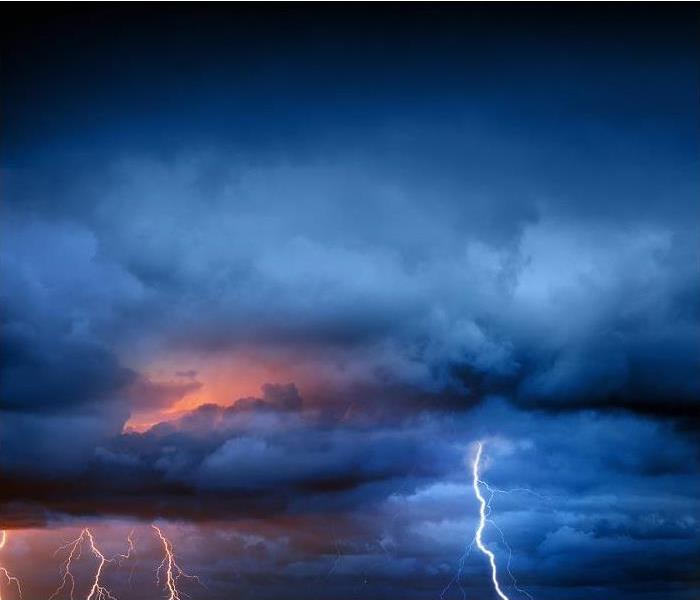 When storms cause water to enter your basement, SERVPRO techs available to make it "Like it never even happened."
When storms cause water to enter your basement, SERVPRO techs available to make it "Like it never even happened."
Fast Mitigation can Protect the Basement and Foundation of Peabody Homes After Flooding
Prompt flood mitigation is vital for Peabody homes. When the basement becomes damaged by intruding water, our team can offer fast water removal and drying options to help.
Floodwater Removal from Basement Floors
Because flood damage to Peabody homes can be devastating, immediate action is necessary to begin mitigating losses. Our SERVPRO professionals have several extraction devices to manage standing water and debris from the basement level. High-pressure pumps and truck-mount extractors have the power to pull water over considerable distances and heights to address basement standing water concerns.
Thorough Drying of Supports and Joists
Drying up the damage after a flooding incident is critical to preventing secondary effects like mold or multiplying contaminants and pathogenic threats. We strategically place our efficient drying equipment throughout this lower level and monitor the progress with moisture meters and infrared imagery. Some of the tools used in this venture include:
- Air movers
- Dehumidification equipment
- Positive pressure systems
- Portable heaters
Mold Prevention and Surface Cleaning Solutions
After flooding, elements in the basement can be met with residues and soils that can be harmful and destructive to underlying substrates. We prioritize surface cleaning to prevent situations where possible contaminants can multiply and spread in the house. Biocides and disinfectant cleaning products are a large part of our surface cleaning strategies for flooded basements.
As challenging as flooding can be, our SERVPRO of Salem / Peabody / Marblehead team can help. We are ready 24/7 at (978) 744-4545.
Speed is Vital for Peabody Flood Water Removal
2/3/2021 (Permalink)
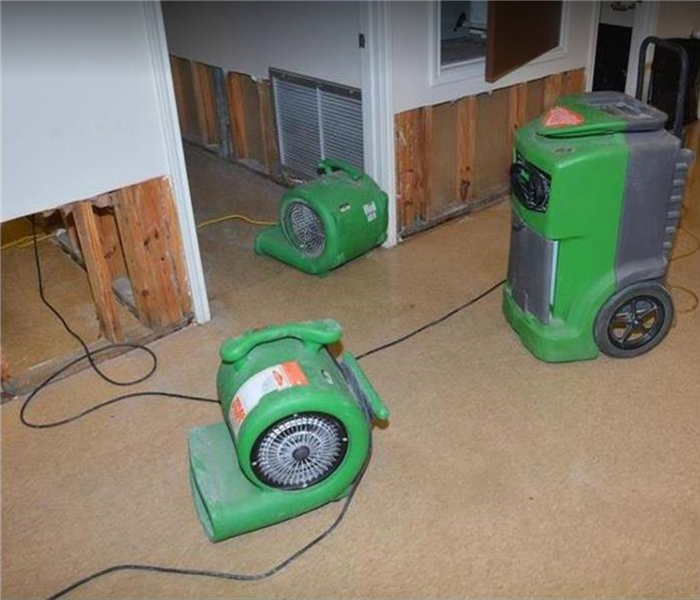 Sometimes we need to make flood cuts to thoroughly dry your flood damaged home.
Sometimes we need to make flood cuts to thoroughly dry your flood damaged home.
SERVPRO Offers a Fast Flood Water Removal Service
Floods can arrive almost without warning and cause significant damage to your home in a short space of time. You cannot always prevent the damage, but it is essential to act quickly to remedy it.
If you need flood water removal in Peabody, call SERVPRO as soon as you can. We’re Faster To Any Size Disaster; our expert teams aim to arrive within four hours of your first call.
Speed is essential because if flood water is left undrained, there is more risk of:
- Water seeping into walls and causing structural damage
- Peeling and bubbling of paint and wallpaper
- Fungal growth inside damp materials
- Wooden floors warping beyond the point of repair
SERVPRO technicians use a range of free-standing and truck-mounted pumps to evacuate water. Then we set up an optimal drying environment using air movers, dehumidifiers, and portable heaters if necessary. We even use air scrubbers and spot treatments to take care of deodorization and nix those nasty damp smells.
For swift water removal, call SERVPRO of Salem / Peabody / Marblehead at (978) 744-4545.
Keeping Historic Salem Safe from Flood Damage
1/20/2021 (Permalink)
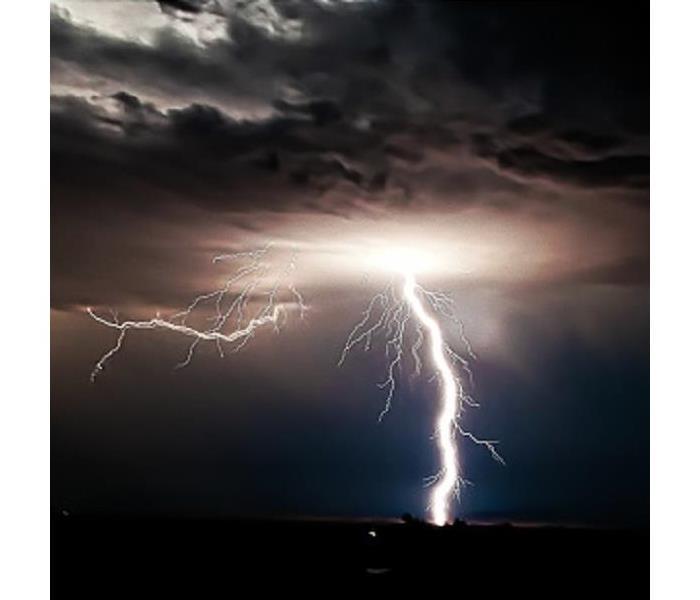 Salem is no stranger to storms, and SERVPRO is always on call to restore your storm damaged home.
Salem is no stranger to storms, and SERVPRO is always on call to restore your storm damaged home.
Salem Flood Damage Cannot Erase History
Salem barely needs an introduction. This thriving city of 41,340 residents is associated with popular consciousness with the infamous Salem witch trials. When you visit, you will see witch logos on police cars, and local schools often name their sports teams after witches and witch-related phenomena.
However, there is much more to Salem than the witch trials. The city has a long history stretching back to 1626, when colonists arrived from Cape Ann to settle in the area. Nowadays, Salem is a modern community with green initiatives such as electric car charging points and free bicycles so visitors can explore Salem in an environmentally friendly way.
It is also a place where history is also close at hand.
The Historical Sites of Salem
If you are visiting Salem, do not miss out on these historical gems:
- Pioneer Village was constructed in the 1930s as the setting for a play. However, the townspeople liked it so much that the city decided to keep it and turn it into a tourist attraction. In June 1930, it became America’s first living history museum. The historical recreation was so accurate that in 1993 Pioneer Village was used to represent seventeenth-century Salem in the opening scenes of Hocus Pocus.
- Salem Maritime Historic Site lets you take a step into Salem’s rich maritime past. Among the attractions on display, you will find the eighteen-century home of Captain Derby, who was the first millionaire in the New World, a custom house, a storehouse, and a replica tall ship named the Friendship of Salem.
- The Federal Street Historic District, where you can view the Old Granite Courthouse
- The Peabody Essex Museum, which holds the record as the longest continually operated museum in the United States.
If you want some fresh air, look no further than Salem Willows, a lush green oceanfront park. The park gets its name from the lovely willow trees planted to provide a shady walk for patients convalescing at the nearby smallpox hospital. Besides peaceful nature walks, you can enjoy seaside fun in the park thanks to its beaches, piers, and boardwalks. Kids are sure to love the playpark, miniature golf, and carousel.
Floods can Cause Havoc in Salem
Salem has seen its fair share of storms and floods. In 2018 a winter storm caused flooding severe enough to put Derby Wharf completely underwater, close schools, and render many roads impassable. City officials proclaimed it the worst flooding in the area for more than 50 years. Historical records show that storms and coastal flooding have been an issue in Salem for many centuries.
SERVPRO Advises Residents on Flood Damage Protection
In the event of flood damage, SERVPRO is here to help. However, it is always better to prevent damage if you can. Some ways to protect your home include:
- Ensuring doors, windows, gutters, and the roof are sound with no holes, cracks, or missing tiles
- Installing storm doors or shutters
- Keeping vital paperwork and medication in waterproof containers and storing them on the upper floor of your house
- Examining your garden and yard to ensure the ground slopes away from your home
Contact us as soon as you notice flood damage. We can extract water, dry your home and belongings, and even liaise with your insurance company. Call SERVPRO of Salem / Peabody / Marblehead at (978) 744-4545.
Take Part In An Epic Game Night In Peabody This Winter
12/22/2020 (Permalink)
 SERVPRO is looking forward to the virtual game night!
SERVPRO is looking forward to the virtual game night!
Enjoy All The Fun Of A Game Night Without Leaving Your Peabody Home
Let’s Roam Scavenger Hunt Adventures has something new for adventurers to try this winter: An at-home game night. Get together with loved ones to play games, including:
- Trivia games with a choice of over 8000 questions.
- Let’s Draw, where you must guess what your friends are drawing before the time is up.
- Virtual charades with tons of categories to choose from.
- And many more!
Game nights run online – no need to download anything. Video chat with friends and family while you play games. It is a perfect way to beat the blues this winter.
You can sign up for a free trial with Let’s Roam online. The trial lasts for seven days. If you love hosting your own game night, you can subscribe for $19.00 monthly, allowing unlimited games and events, but there is no obligation.
Do not let storms ruin your fun this winter. If you need help with groundwater removal after a storm, call SERVPRO of Salem / Peabody / Marblehead at (978) 744-4545.
Salem Massachusetts is Rich in Culture, Architecture, and History
11/4/2020 (Permalink)
 It will be exciting to see the community at the Salem Art Association annual art exhibit.
It will be exciting to see the community at the Salem Art Association annual art exhibit.
Salem Arts Association Annual PEM Inspirational Exhibition
Every year local artists have the opportunity to exhibit some of their most inspirational pieces. Inspiration for their work is drawn from the Peabody Essex Museums' collection of outstanding art and architecture exhibitions. Members explore the history of Salem to create their artistic interpretations covering everything from:
- The season – Autumn
- Halloween
- Witchcraft and
- Their interpretation of the city's history
Guests may view the exhibit during regular hours on the weekends from 12:00 to 5:00 pm until Nov 8, and attend virtual 3D tours of the gallery. Guests may also purchase exciting pieces in person and online. Take a virtual tour and examine any of the displays from the comfort of your home. Virtual tourists can even measure artwork they find interesting.
SERVPRO of Salem / Peabody / Marblehead provides professional flood water removal services to Salem residential and business customers and the surrounding area. Call (978) 744-4545. We are available 24/7 to help with flood water removal, mold mitigation, and restoration.
How Quickly Can Flood Damage Wreck Your Home?
10/26/2020 (Permalink)
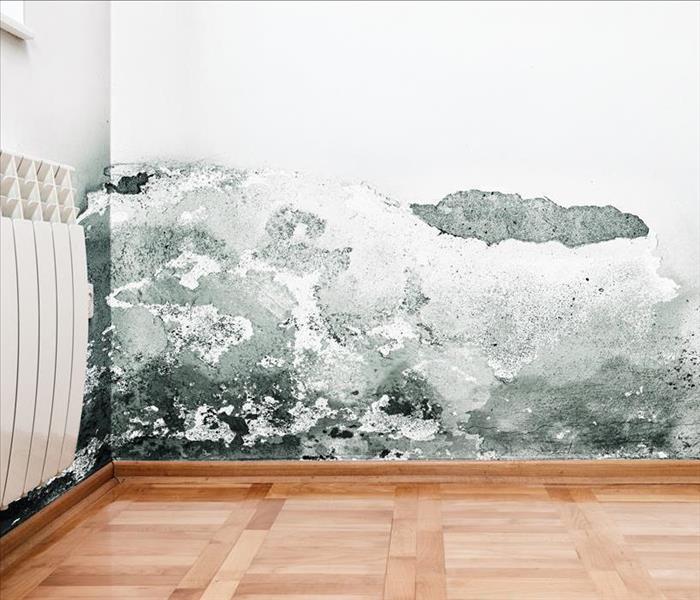 SERVPRO Says--Call us fast to mitigate flood damaghe and prevent mold infestations in your Salem home
SERVPRO Says--Call us fast to mitigate flood damaghe and prevent mold infestations in your Salem home
Salem Residents need Flood Damage Remediation Fast
When a storm rips through Salem, it can leave all kinds of chaos in its wake. We are all used to seeing images on television of storm-ravaged houses, but of course we hope it will never happen to us. Unfortunately, you cannot guarantee your home will not suffer damage, but when disaster strikes, SERVPRO is here to help.
Speed is vital when dealing with flood damage in your Salem home. Floodwater causes more damage the longer the situation goes on.
What happens when floodwater first enters your home?
The damage begins as soon as water enters your home. Moisture immediately soaks into:
- Floor and walls
- Carpets and rugs
- Upholstery and drapes
Color can bleed out of upholstery in minutes, paper products can swell, and wood can warp.
What are the risks in the first few hours?
In the first few hours, drywall soaks up water, carpets become even more water-logged (and usually are not salvageable), and wood swells more. Metal surfaces might start to tarnish, and you will start to smell the unmistakable damp odor that comes after flood damage.
What are the risks in the first week?
Within a week, the effects of a flood are catastrophic:
- Mold spores start growing within 48 hours, which can cause health effects and spreading fungus
- Doors and window frames swell to the point they cannot open
- Metal starts to rust
- Paint blisters and bubbles
Can SERVPRO get here fast?
It is clear that fast action is vital. We contact you within an hour of receiving your first call, and arrive at your home within four hours to begin assessment and remediation.
Our technicians come with industry-grade personal protective equipment and powerful pumps, air dryers, and dehumidifiers. We remove excess water, then dry your home, and supervise necessary repairs. Because we arrive quickly, we can often save wooden furniture and upholstery.
We monitor moisture levels and check for hidden patches of moisture, to ensure a thorough job. We also deodorize your home when we are finished, so it smells fresh once more.
If you need help fast, call SERVPRO of Salem / Peabody / Marblehead at (978) 744-4545.
Can Residents Use Sandbags to Help Prevent Flood Damage?
9/14/2020 (Permalink)
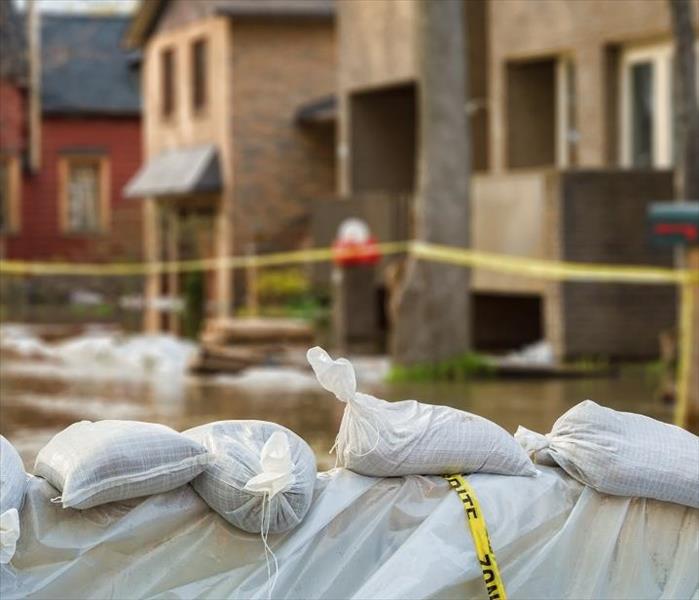 Sandbags can help minimize the risk of flooding.
Sandbags can help minimize the risk of flooding.
Salem Homeowners Are Keen to Protect Their Properties from Flood Damage
Anyone living in Salem knows that home repairs can be costly and time-consuming. That is why it is better to keep on top of home maintenance and fix problems as soon as you notice them. It is advisable potential issues and mitigate them before they happen.
One crucial area of preparation is reducing flood damage from Salem storms. By the time weather forecasters predict a storm, it is often too late to take action and protect your home. Get your supplies together ahead of time, so you are ready to act when a storm warning comes.
Sandbags are one way to protect your home.
What are sandbags, and how do they work?
A sandbag is a burlap or polypropylene sack filled with sand or dirt. People use sandbags to:
- Create military barricades
- Temporarily fix a damaged levee or dyke
- Control and direct traffic
- Protect homes and businesses from flood damage
Sandbags can create a temporary barrier and keep floodwater away from your home, but you must have them on hand when the storm hits. If flooding is already underway, you will not have time to fill and stack sandbags.
How do I make and stack sandbags?
Making sandbags is easy. For residential use, around 18" wide and 36" deep, or slightly smaller, is a good size. Fill bags between a third and a half-full with a heavy-bodied or sandy soil. Always use burlap or woven polypropylene sacks – no other materials are suitable.
When you get word that a flood or storm is coming, stack sandbags by following these steps:
- Overlap the top of the bag (don't tie) and stack them with the folded part underneath
- Place the folded piece pointing uphill so they will not open when water runs past them
- Stamp each bag firmly into place to create stability
- Create one layer at a time, placing bags, so they overlap like bricks in a wall
What risks do I need to look for when using sandbags?
SERVPRO knows it is essential to keep floodwater from your Salem property, and improper use of sandbags can cause more problems than it solves. Do not use sandbags to create a fence around your home. Flood water can collect between the bags and your house and cause more damage.
Use plastic sheeting between sandbags and your house's wall if you can, as this makes the sandbags more effective.
Know that it takes two people to fill sandbags, and it is a time-consuming process – you cannot do it in a hurry when a storm has already started. Sandbags cannot always completely protect your home, but they can reduce the amount of water that reaches your house.
Can SERVPRO help me if water gets into my property?
If water enters your property, SERVPRO of Salem / Peabody / Marblehead is here to assist. We are constantly available 24/7, and we train our technicians in every aspect of flood damage cleanup. We are Faster To Any Size Disaster, which means you should call us to help with minor or significant flood damage.
What can SERVPRO do about storm damage?
Our technicians can take care of every factor of flood damage remediation:
- We use free-standing and truck-mounted pumps to extract flood water from your house
- We use dehumidifiers and air movers to dry the structure of your home, and to dry around and between furniture
- We use wet and dry cleaning, spot cleaning, and ultrasonic cleaning to restore your personal belongings
- We bring in air scrubbers, fogging machines, and ozone generators, to remove damp odors
Our technicians use industry-standard monitoring equipment to log drying results and adjust our method if necessary. If elements such as drywall, carpet, or wallpaper are damaged beyond repair, we can restore them.
Is there anything else I can do to protect my house from floodwater?
Before a storm comes, you might want to look into fitting storm doors. It is also good to stay on top of repairs such as damaged guttering, missing roof tiles, or damaged window and door frames. Water can get through the tiniest gaps, so it is essential to mend even the smallest of leaks.
Sandbags are a temporary measure – they degrade with use and cannot be used as a permanent measure. However, they can provide temporary relief and reduce the amount of water that enters your home during a storm. If water leaks into your home, call SERVPRO so we can take care of remediation.
For help with flood damage, call SERVPRO of Salem / Peabody / Marblehead at (978) 744-4545.
Winter Storm Damage
3/18/2020 (Permalink)
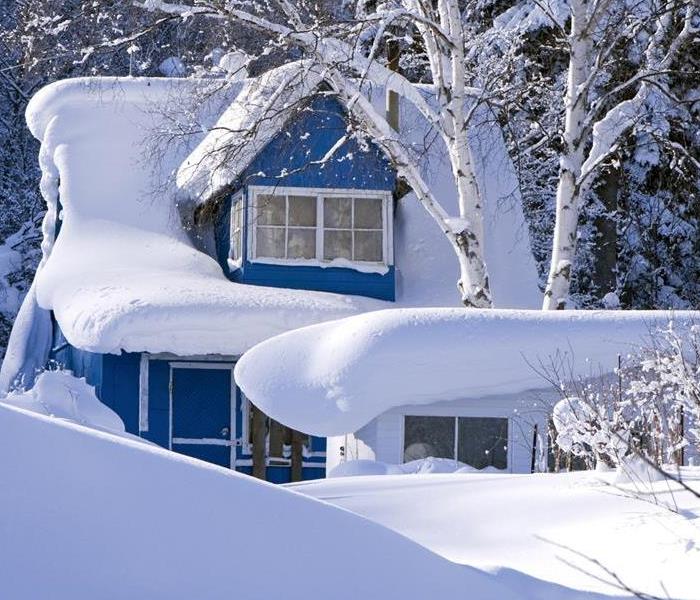 Check your home for signs of winter storm damage
Check your home for signs of winter storm damage
Winter storm damage is usually associated with damage to the exterior of your home or building, but in a worst case scenario such damage also causes interior damage as water is allowed inside where it isn't supposed to be. Water damage causes ongoing problems if ignored, rather, it has to be repaired immediately. What is a minor expense and more of a nuisance to deal with can become a major home restoration project if it isn't dealt with in a timely manner.
Causes of Water Damage
Although nobody can plan for every contingency, there are common causes which more likely than not have led to water damage in your house. The first is a leaking roof which occurs because of damaged or aged shingles and sealant around chimneys. A second reason is because of a burst pipe, which often happens because of freezing weather when the pipe extends through an unfinished area and isn't properly insulated. Arguably the worst water damage can be caused by flooding when the foundation's drainage system has been compromised or isn't functioning properly.
Means of Prevention
Hands down, the best means of prevention is to be aware of damage and have it repaired as soon as it occurs. Such a plan doesn't always work because it isn't practical to check your roof after every storm, you can't predict when a pipe might freeze if it never has before, and you can't dig up your foundation to check for problems. You can, however, have routine inspections performed and take care of accrued damage as soon as it is found. An experienced contractor can see inspect the roof for problems, notice an improperly designed water pipe, and recognize signs of foundation drainage problems before they cause massive amounts of damage.
Proper Repair Methods
Roofing repairs are fairly straightforward, replace missing shingles, secure loose ones, and reseal around chimneys and exhaust pipes. Misplaced pipes don't have to rerouted, there is a simple solution against freezing in the form of a specialized insulation. It runs a tiny electric current, not enough to even notice on your power bill and not enough to heat the water noticeably, but just enough to prevent freezing. The foundation, unfortunately, doesn't have a simple solution but has to be dug out so the drainage system can be rebuilt. The good news is that by design such a problem is rare enough that very few people ever have to deal with it.
If you've suffered winter storm damage call the professionals at SERVPRO of Salem/Peabody/Marblehead at 978.744.4545
Heavy Rains and Downpours
3/18/2020 (Permalink)
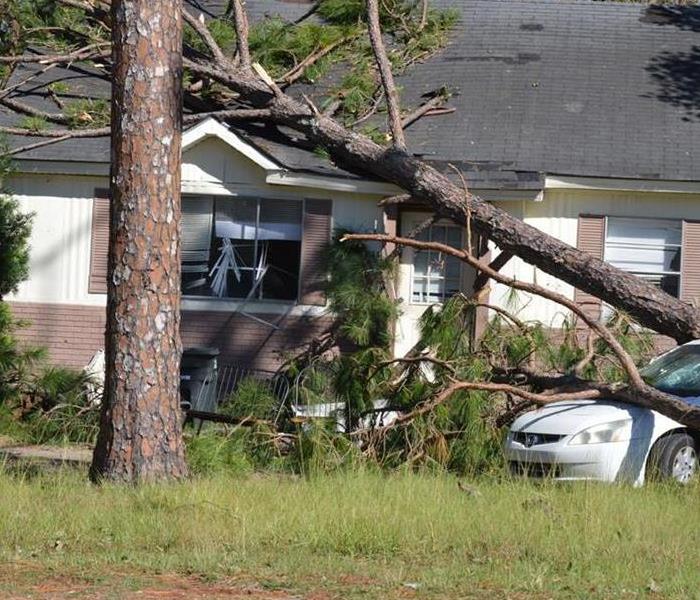 Spring in Massachusetts means heavy rains and downpours
Spring in Massachusetts means heavy rains and downpours
Sometimes the weather gets a little bit crazy and the rain pours down from the sky with force. These types of rains don’t happen all the time, but when they do, they can cause major indoor water damage to homes and businesses. Water pounds down on roofs and can cause leaks in the ceilings, it can puddle up outside of the homes and businesses and seep in through windows or cracks, it can even come down so hard that it causes inches of rain to flood the streets, parking lots and driveways and eventually make its way indoors. When heavy rains cause damage to your property, don’t wait to call in SERVPRO of Salem/Peabody/Marblehead's cleanup crews that can extract the water and dry the water damaged areas quickly to reduce the amount of damage that comes from heavy flooding!
Water damage from rain that floods the inside of a property is not the highest quality of water. Flooding rainwater is often contaminated with dirt and other debris that is unhealthy to be around. If the heavy rain has caused rivers to overflow or sewage to back up and get into your property, then the water is extremely detrimental to your health and should not be touched or stepped in. Contaminated water can easily cause health issues and sometimes even death if not handled properly. Do not risk anyone’s health by getting in the water or asking anyone else to get in the water. Call our team that has been trained to properly clean up, decontaminate, and restore areas affected by contaminated water.
Even if the source of the water is clean, or seems to be, you do not want to try to clean up the water and handle the restoration process on your own. Professionals have industry sized equipment to extract standing water and dry the affected areas quickly. If water is not completely removed and dried, it can easily turn into a mold problem that will be more extensive and costly to repair. Mold can start growing in as little as 24 hours.
If you have water damage from previous flooding and can see, or suspect, mold growth, don’t worry. SERVPRO of Salem/Peabody/Marblehead is a certified mold remediation company with a team of mold experts that can clean up and repair any area that has been destroyed by mold. SERVPRO of Salem/Peabody/Marblehead is a one-stop-shop when it comes to water damage cleanup, fire damage cleanup, and mold removal. No need to rely on any other company.
If you have experienced any type of flooding remember these three key things
- Do not wait to get help. If you wait too long, you are going to end up with a bigger problem that will take longer to repair and cost more.
- Do not try to do it on your own. If you do, you are likely to cause a bigger problem. Let the specialists take care of it so that the job can be done the right way, the first time.
- SERVPRO of Salem/Peabody/Marblehead is local and works around the clock. No matter what time the damage happens, we have a team on call and ready to help!
- Call us today at 978.744.4545
The Dangers of Storm Water
3/17/2020 (Permalink)
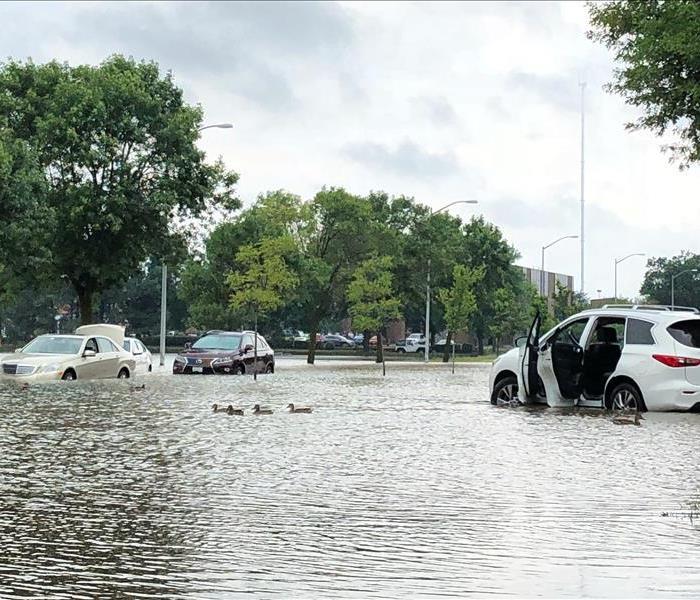 Post-storm flood waters can be very dangerous.
Post-storm flood waters can be very dangerous.
Storms and hurricanes devastate different regions every year. Unfortunately, some of the biggest dangers caused by storms can occur after the storm has already passed. In addition to a lack of supplies and road closures, the standing flood water resulting from storms can cause serious health risks. Here are some of the most severe problems floods can bring.
Health Dangers
Standing flood water is teeming with health risks. The CDC has a section detailing all of the possible diseases that become more likely in the event of a storm disaster, including Norovirus and the West Nile Virus. Bacterial infections and diseases become a greater possibility because flood water can infect everything it touches. This can include anything from articles of clothing to the toys that children play with. For this reason, it is incredibly important not to drink or eat anything that has been contaminated by standing flood water, and to always wash hands as often as possible- especially before meals. In addition, open wounds pose a far greater risk of becoming infected as a result of storm waters. If at all possible, keep open wounds out of the water or cover with waterproof bandages.
Physical Hazards
Disease isn't the only invisible hazard that can exist within standing water. Murky water can conceal dangerous insects or even threatening animals beneath the surface. Much of this depends on the location of the storm, but it's not unheard of for alligators to make use of a new habitat resulting from a storm. In addition, much of the physical damage caused by a storm is still present in the water. This can include broken glass or sharp metal which might be impossible to see before it causes injury. On top of that, storms frequently cause damage to power lines. These can lead to a risk of electrocution in standing water. Flood water itself poses the possibility of causing drowning, whether people are in their cars or trying to swim across.
If you've suffered flood damage call the experts at SERVPRO of Salem/Peabody/Marblehead at 978.744.4545
Every Business Needs an ERP
3/4/2020 (Permalink)
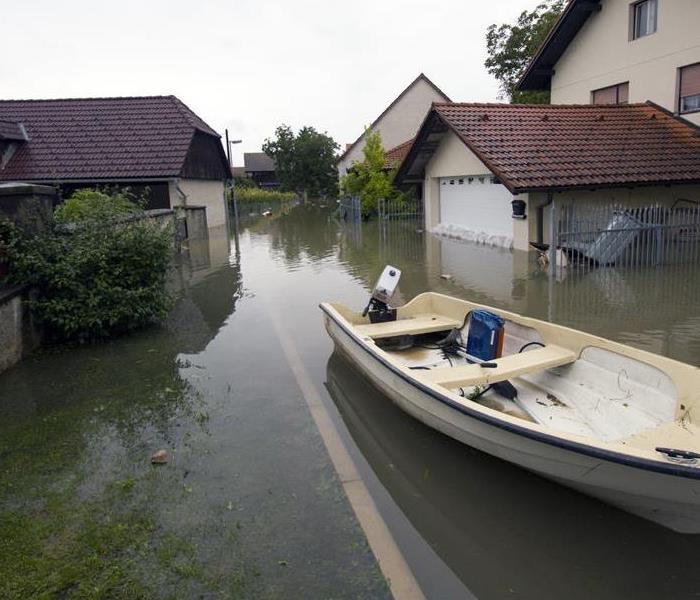 Protect your business by have an ERP in place!
Protect your business by have an ERP in place!
For any company, having an Emergency Response Plan (ERP) means having a plan for your business when an emergency strikes. In the event of such an emergency, ensuring continuity for your business is the top priority. It may be a cliché to say so, but no business owner should leave it to chance or wait until after a disaster happens before coming up with a plan. Knowing what to do and when after a natural or manmade disaster should be an essential part of every business owner’s business plan.
The Impact of Disasters on Small Businesses
Emergencies and disasters of any size that impacts your business can lead to a permanent closing. It’s not a scare tactic. It’s a statistic. The fact is small businesses are actually more vulnerable to natural disasters. FEMA’s oft-cited business failure rate of near 40% after a natural disaster is one such sobering statistic. Add another 25% to those businesses that do open after a disaster only to end up shutting their doors within two years. That’s a staggering 2 out of 3 small businesses gone from a community.
No one wants to lose their business and no one wants to see Main Street boarded up following a disaster. Small businesses are vital to the economic health of every community. It’s not just important for a company’s profitability and its employees, but the overall community for businesses to remain open and continue to thrive. Yet, for many small businesses and companies, it is difficult to find the time or resources to develop an ERP. In most instances, the plan is simply relying on insurance to aid in rebounding from a natural or manmade disaster. Insurance may cover some or a majority of the losses, but it will not ensure the continuity of your business.
Why Your Business Needs an ERP in Place
That’s why every business should have an ERP in place. ERP is a strategic plan for businesses to successfully respond to manmade and natural disasters. The design and execution of an emergency response protocol means creating a working model that a business can implement when an emergency situation arises. Having one in place can ensure business continuity. Businesses large and small should conduct risk assessments that are shaped by the degree and complexity of their business operations beforehand.
Contract with an ERP Partner
The reality is, developing an ERP and having one in place can be limited by many constraints. The resources, assets and skilled personnel on staff with the expertise to effectuate an ERP are often beyond the reach of many businesses. Therefore, contracting with a full-service restoration company can be of great benefit to you and your business. Partnering with SERVPRO of Salem/Peabody/Marblehead to develop a plan ensures that your business is disaster-ready. Every detail and contingency is laid out in advance that best fits your business’ needs. Having the necessary data and documentation stored securely in advance allows for protocols to be implemented in a timely manner—which is as soon as possible to ensure continuity. If a disaster occurs, the restoration company will immediately take action to employ the protocols—the personnel, equipment, and devices as defined by your ERP.
Preparation is Key
Preparing before an emergency plays a vital role in the long-term success of your company. Having an ERP in place can greatly ensure your business’s continuity should a disaster happen. Partnering with SERVPRO of Salem/Peabody/MArblehead to manage the crisis allows for professionals to prioritize the respective mitigation, recovery, and restoration to ensure your company is up and open for business with the least amount of disruption to you, your employees and the community as a whole.
Choosing a Restoration Company with 24/7 Emergency Services
SERVPRO of Salem/Peabody/Marblehead is a full-service restoration company that specializes in ERP planning and implementation. When it comes to persevering through a disaster, don’t leave your business to chance. We are a certified IICRC firm, OSHA 10 certified company that will work with you to see the continuity of your business through the most difficult times. Contact us today at 978.744.4545 to get started with an ERP for your business today!
Storm Flooded Basement? NOT a DIY Project!
3/4/2020 (Permalink)
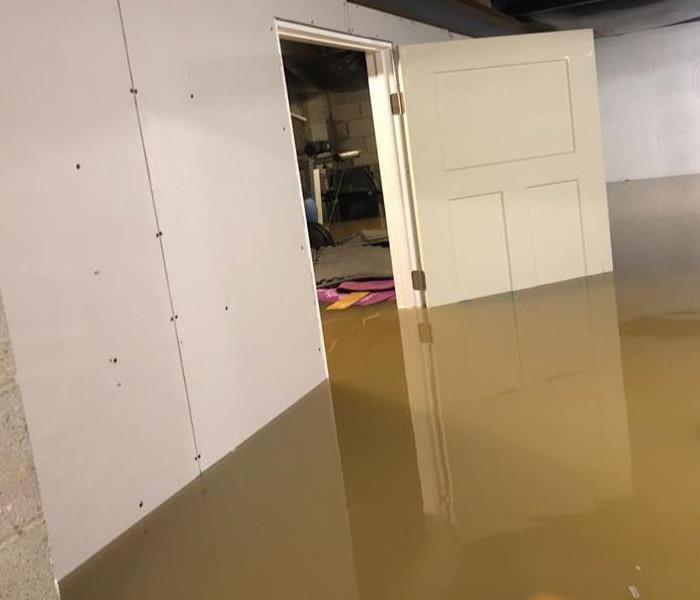 Storm flooded basements need to be handled by professionals
Storm flooded basements need to be handled by professionals
Coming home to a flooded basement is something no homeowner wants to experience. Not only can it be traumatic if cherished possessions were ruined, but it can also lead to more problems down the road if the water is not properly cleaned up right away.
How to Clean a Flooded Basement? The Answer is Not What You Think
While it can be tempting to try and take matters into your own hands, there are a lot of issues that could arise if the cleanup isn’t properly handled. For one, it could be dangerous to even enter your basement due to the potential for electrocution. Professionals know what steps to take to ensure the basement is safe to enter, but homeowners may not.
Depending on the type of water that caused the flood, it could also be a health hazard. There are three primary categories of water issues:
- Clean water, such as water that has leaked from a pipe.
- Gray water that has leaked from a washing machine or other appliance.
- Blackwater containing sewage and other contaminants that could be the result of a sewer backup.
Because black water contains sewage, it is considered a biohazard. If you try to handle cleanup duties yourself without proper protective clothing and gear you could become ill.
It’s also important to make sure all water is completely removed from your basement. Professionals like the staff at SERVPRO of Salem/Peabody/Marblehead have the necessary equipment to extract water and to properly dry your basement to ensure that no moisture remains. If all the water isn’t removed, the basement walls and floor could become damaged.
A basement that isn’t properly dried out is also at risk of developing mold, which can not only damage your home, it can lead to a host of health problems. These are potential issues that may not be obvious to a homeowner but would be to a trained professional.
If you do experience a flooded basement, give the experts at SERVPRO of Salem/Peabody/Marblehead a call right away. Our team of cleaners will:
- Perform water extraction and removal to eliminate all water from your basement as quickly as possible.
- Utilize professional-grade air-movers to begin the drying-out process.
- Bring in professional-grade dehumidifiers to remove any remaining excess moisture from the air.
- Thoroughly inspect your basement to check for other potential issues, such as drywall damage or mold growth. If mold is discovered, the cleaning crew will take the necessary steps to remove all traces of the mold and mitigate the damage.
If you’ve experienced water damage because of storm flooding, SERVPRO of Salem/Peabody/Marblehead can help. Give our team of certified water damage professionals a call at 978.744.4545.
Storm and Flood Safety Tips
10/26/2019 (Permalink)
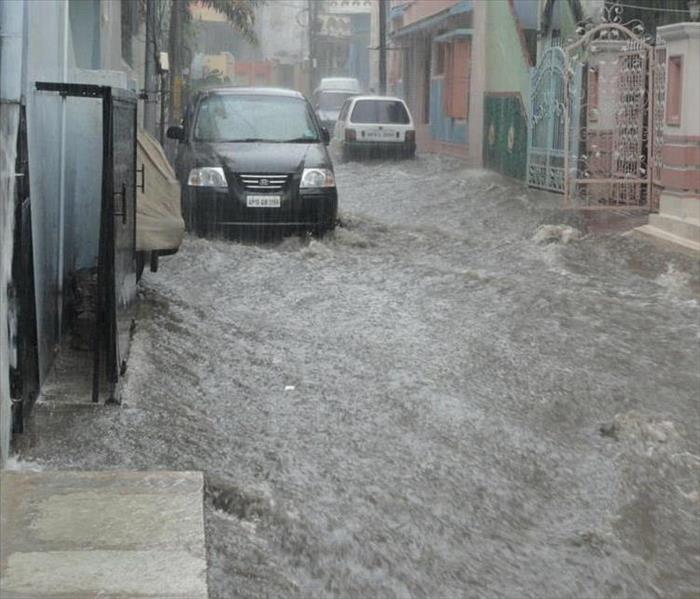 Storms and floods are dangerous and require numerous precautions
Storms and floods are dangerous and require numerous precautions
The fall brings with it hurricane season, and even if you don’t get hit directly, the heavy rain – and flooding – can still have a major impact on your home or business. Flooding can be extremely dangerous if you’re not prepared. Here are some safety tips to help you prepare for some of Earth’s most common natural hazards.
Wear Protective Gear
If you’re in a flooded area, make sure you’re wearing waterproof protective gear. Floodwaters can contain harmful bacteria and other organisms that your body is unable to fight off. If you have any sort of injury that floodwaters get into, you could get an infection that can quickly claim your life.
Don’t Drive or Walk Through Flood Waters
If you can avoid going anywhere during severe weather, you should. If you see water across the road, you should NOT drive through it. You have no idea how deep it is! If you try to take your car through it, you could end up with water in your engine – which will ruin the automobile. There’s also a serious danger of being swept away in swiftly moving water.
Walking carries similar dangers. The bacteria mentioned previously are a danger, as are invisible objects hitting you underwater. They can cause serious injuries and even cause you to lose your footing and potentially drown in deep enough water.
Keep An Eye Out For Falling Objects
Soft, wet ground mixed with wind is a recipe for falling objects. Keep an eye on any trees or light poles in your yard, they can blow over and potentially into your home. If you notice that an object is about to fall into your home, get out. If there’s somewhere you can go that’s less dangerous, do so. If nothing else, try to get into a room that won’t get hit.
Don’t Touch Downed Power Cables
Downed power cables are still potentially live. Do not touch any that are within reach, and report all outages and fallen lines to your local power company. These can cause nasty electric shocks and potentially burns. Water is also a conductor for electricity. If you see a power line in water, avoid that water at all costs.
Always Call Professionals
After the storm is over, make sure you call the professionals at SERVPRO of Salem/Peabody/Marblehead at 978.744.4545 to help you clean up after a flood. Our goal is to restore your home or business to its original state as quickly as possible. Above all, stay safe!
Different Types of Storm Damage
3/17/2019 (Permalink)
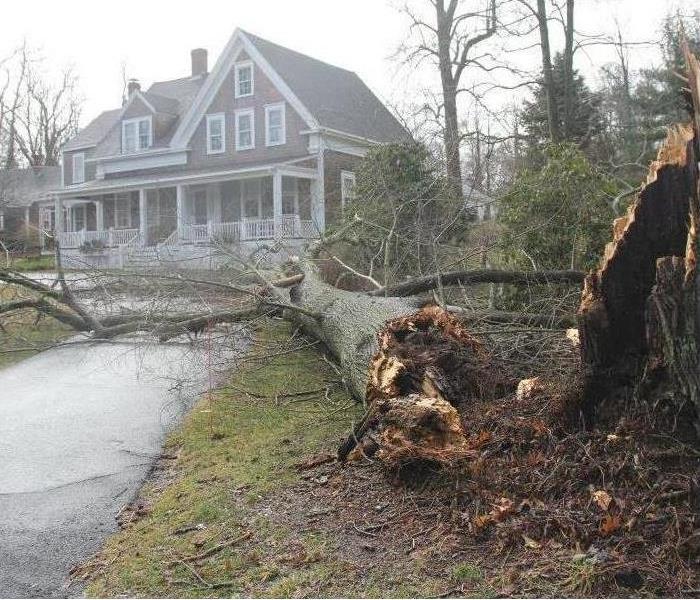 Storms can impact your home in different ways
Storms can impact your home in different ways
Wind Damage Restoration
Hurricane damage sometimes includes severe wind damage. Roof damage in this situation may range from a missing roof, to harsh winds and rains shearing away asphalt tiles. Roof repair of obvious defects usually ensues in the wake of hurricane damage and storm remediation. Correcting roof damage may challenge homeowners after a disaster, since a roof leak may not appear obvious.
How can a roof leak and roof damage escape easy detection in this situation? Wind damage may loosen flashing, eventually causing another roof leak weeks after the storm. Even a subtle roof leak of this nature can produce damp, moldy conditions inside the home. Obtaining fast roof repair may prevent long term interior damage. A wind damage home restoration expert may assist clients in receiving comprehensive roof assessments and roof repair services when hurricane damage afflicts an area. Their expertise helps property owners address storm damage and roof damage more effectively.
Flooding And Recovery
Flood water frequently poses a risk in coastal areas. Yet heavy rains may cause river flooding miles inland also. If the surrounding terrain cannot absorb ground water, runoff contributes to flood water. Even residents of mountainous areas sometimes sustain varying degrees of flood damage if frozen pipes rupture. Flood pump failures contribute to basement flooding and contaminated ground water in some locations, too.
Flooding may disrupt municipal water systems. Experts need to assess ground water and evaluate the condition of pipes following flood damage. Hiring a storm restoration firm may allow you to begin your cleanup process even before water restoration occurs. (Cleaning before water restoration often proves essential yet challenging.) By relying upon a trained specialist, you'll usually obtain faster storm remediation. These experts may suggest ways to help mitigate flood water damage in the future, for instance, by requesting backup flood pump installation.
The storm experts at SERVPRO of Salem/Peabody/Marblehead are here to help 24 hours a day and 7 days a week! Call us at 978.744.4545
Steps to Take Immediately After Storm Damage
3/17/2019 (Permalink)
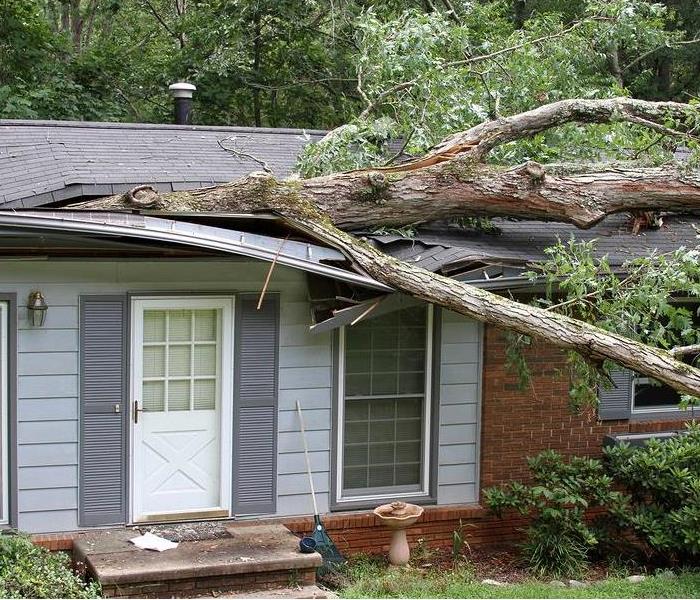 When storm damage occurs, let SERVPRO of Salem/Peabody/Marblehead help
When storm damage occurs, let SERVPRO of Salem/Peabody/Marblehead help
Take Safety Precautions
Heavy winds and rain can create physical hazards such as collapsed roofing materials, window damage, collapsed walls or standing water in the basement or home interior. In addition, moisture can soak into furniture, carpeting, and building materials making the perfect environment for mold growth that can cause health issues. Shut off the main gas line if you smell gas. Beware of broken glass, exposed nails, and other sharp objects on the property. Contact SERVPRO of Salem/Peabody/Marblehead to help do basic tasks to secure your property and make it safe to use. If necessary, arrange for an alternative place for you and your family to live while your property is being restored to safe living condition.
Photograph the Damage
If it is safe to move around your property, use your cellphone or a camera to photograph the damage so that you will have a record for your insurance company. This action will ensure that you are fully compensated.
Contact Your Insurance Company
Contact your insurance agent to notify them about the damage to your home immediately. The company will send out an adjustor to determine the extent of the damage so that payment for repairs can be made.
Look Into Federal Disaster Assistance
The federal government may have declared the area affected by the storm as a disaster area that is eligible for low-cost loans to help restore your property to normal. You will be required to file documents to receive these loans.
When a storm-related disaster strikes, it may seem overwhelming, but these steps can help you to begin the process of restoring your home, and your life, to normal. At SERVPRO of Salem/Peabody/Marblehead, we provide 24-hour emergency disaster service. We specialize in the stabilization and restoration of homes and businesses that have suffered small or large loss from water, flood, wind, storm, fire damage, and smoke disaster.
Call SERVPRO of Salem/Peabody/Marblehead at 978.744.4545
Preparing for a Winter Storm
3/15/2019 (Permalink)
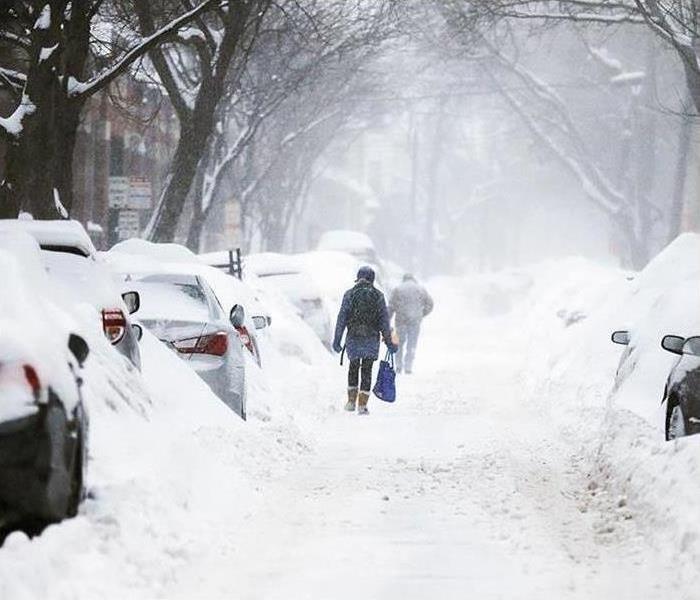 Be prepared for winter storms in Essex County!
Be prepared for winter storms in Essex County!
Now that it is winter in Massachusetts, we must remember how to prepare for a winter storm. All winter long we get warnings of impending snow. Whether we enjoy the winter season or not, we must be ready at any time for a large amount of snow fall, ice storms, or well below freezing weather. At SERVPRO of Salem/Peabody/Marblehead we are ready 24 hours a day and 7 days a week!
As for any type of impending storm it is suggested to have enough food and water for everyone who lives in the home to last at least three days. The recommended amount of water per person is 3 gallons. The food should be food that doesn’t need to be cooked or refrigerated. It is also suggested that you have a radio that runs on batteries so you can get updates on what is happening even if the power goes out. Additionally, extra batteries, flashlights and candles should be on hand. If you have a fire place, ensure that the chimney has been cleaned and inspected and that you have wood available. A fireplace, kerosene heaters can be used as alternative heat sources.
There are specific things that can be done right before a winter storm hits. You should fill your gas tank to ensure you have enough gas should you get stuck while traveling. Put blankets and additional winter gear in your car. If possible, you should avoid driving during a winter storm. This will lessen the traffic on the roads and the chance of getting stuck or in an accident.
Check your shovels and snow rakes and put them somewhere that is easily assessable. It is important to keep a shoveled path into your home. Should an emergency arise where emergency responders need to come to the home, it’s important for them to have easy access. Spraying your shovel with WD-40 will stop the snow from sticking to your shovel.
Make sure your cell phones and other electronics are charged and ready for use.
During the storm, should temperatures dip below freezing you should turn all faucets in your home on so they are slowly dripping. This will help keep pipes from freezing, which could save you in the long run from having to clean up water damage. Leaving the cabinet doors open will help your pipes stay warmer. Wrapping towels or newspaper around your pipes to help insulate them should you lose the ability to heat your home.
Should you suffer any damage during a winter storm please call SERVPRO of Salem/Peabody/Marblehead at 978.744.4545. We are here to help!
Preparing For Hurricane Season
3/3/2019 (Permalink)
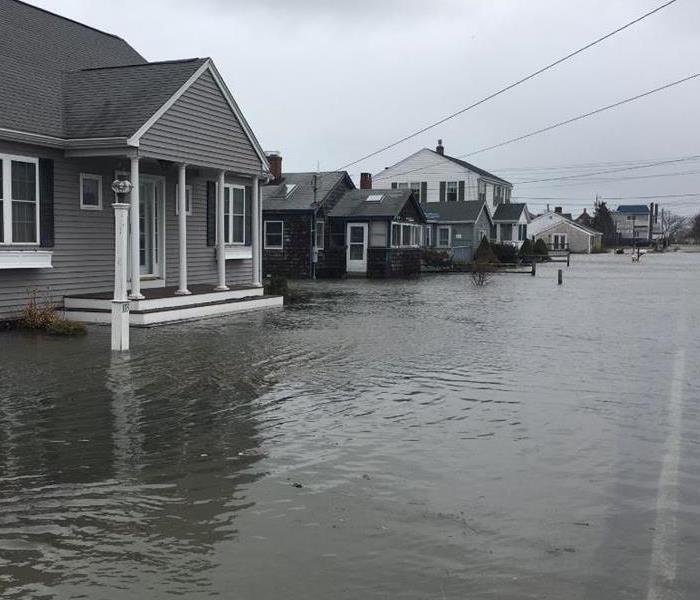 Prepare your Essex County home for storms.
Prepare your Essex County home for storms.
As the calendar flips into spring and summer, we’re faced with a tough reality: hurricane season
While this year’s predictions may be milder, there’s still the chance that a hurricane could come crashing through the Massachusetts coast between now and the end of autumn when the season traditionally comes to an end. And any storm that does make landfall can still leave devastation in its wake. That means it’s still important to do everything you can to prepare for a hurricane now so you can handle the emergency should a situation arise.
Prepare Your Home
Hurricanes can cause immense damage to structures in the areas that experience the storm, and you don’t want your home to be among those hit the hardest. Thus, if you want to have your life return to normal as soon as possible, you should take the time and make the effort to protect your home.
At the outset of summer it’s a good idea to trim any trees on your property to remove any dying, thin, or brittle limbs that may fall down or become a risk factor during high winds, especially the ones that are close to your home. You’ll also want to make sure your property’s drainage lines are clear and clog-free so that flood waters have somewhere to drain out to.
Have an Evacuation Plan
The good news about hurricanes is that they often give us significant warning that they’re coming and you’ll be able to prepare to evacuate if you’re directly in the storm’s path. However, it’s extremely helpful to have the necessary supplies and a plan ready to execute. First, always be sure you have a stored supply of enough food and water to last you at least three days, plus personal hygiene items like toothbrushes, toothpaste, toilet paper, and soap. You should also have an emergency kit that includes things like flashlights, blankets, and a battery-operated radio. Instant ice packs are a good idea, and a spare supply of any important medications you or a loved one needs, such as insulin.
You should also have copies of your most important records available in a place where they can easily be packed and brought with you.
And of course, don’t consider leaving any pets or animals behind to “ride out” the storm. If you have larger animals like horses, know where they can be brought and boarded safely that’s out of the way of the storm. For dogs, cats, or other small animals, be sure to bring at least a few days’ supply of food for them, as well as a pet carrier that’s large enough for them to stand up and turn around comfortably in. Make sure they have a collar and an ID tag that’s up to date with your latest information.
Likewise, don’t assume a hotel or shelter will accept them automatically. During emergency situations, you may be required to show that their shots and vaccinations are up to date, so be sure you have that ready to go with your important records.
If your home suffers flood or water damage as a result of a storm, let our SERVPRO of Salem/Peabody/Marblehead experts help you set things right again. Call us today at (978) 744-4545.
Not All Storm Water Is The Same
3/3/2019 (Permalink)
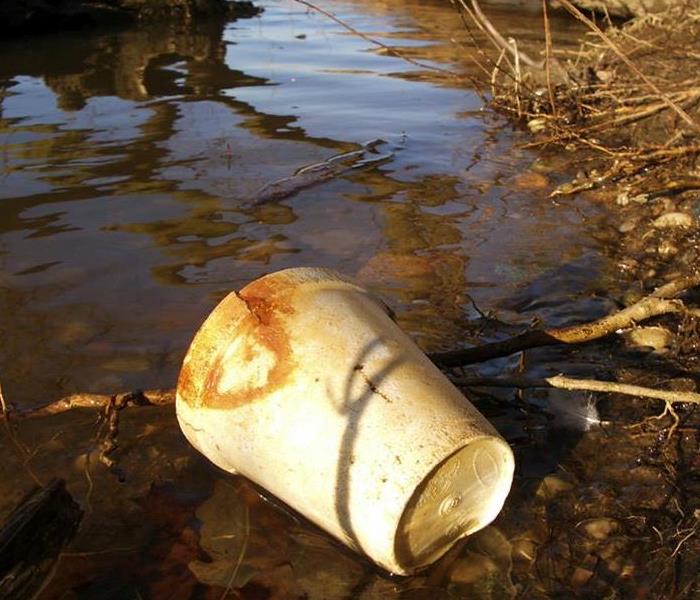 Water from storms can be harmful
Water from storms can be harmful
How many of you remember as a kid playing in or around storm water drains or roadside ditches? It was fun, right? While you may have enjoyed splashing around in the waters, you might not realize that storm water like this may actually be contaminated with raw sewage, dangerous chemicals, or harmful bacteria and viruses capable of transmitting dangerous diseases to you.
In this same way, the harmful water that invades your home following a storm can be harmful.
Restoration Depends on Water Type
Specific steps must be taken to reduce property destruction, depending on the type of water damage. According to the Institute of Inspection Cleaning and Restoration Certification (IICRC), who sets the standards for the cleaning industry and water damage restoration training, there are three levels or types of water involved in damages. They include:
Category 1: Clean water
This water damage is from sanitary sources, such as an overflowing sink or tub, burst water pipes, failed supply lines to appliances, drinking fountains, or vertical falling rainwater.
Category 2: Grey water
This water is from sources that could make you uncomfortable or ill if ingested. Washing machine, dishwasher, or urine-tainted toilet overflows belong in this category.
Category 3: Black water
This is the worst classification of water and could cause severe illness if ingested. Sewer backups, flooded rivers, feces-tainted toilet overflows, or stagnant liquid that has bacterial growth are all examples of black water.
Let the Experts Save Your Home and Belongings
Seeping water damage is progressive, pervasive and can mean valuable objects or keepsakes may become permanently damaged. The professionals you find at SERVPRO of Salem/Peabody/Marblehead are trained on how to handle the various types of water damage. Once they arrive on the scene at a home or business, they quickly assess the situation and start the restoration process in these three areas:
- Aggressive cleaning: Wall cavities and other surfaces are pressure washed with a detergent solution. Salvageable materials are flushed and thoroughly disinfected.
- Moisture detection: Not all water damage is visible to the naked eye. Water trapped in structural cavities may require sophisticated detection equipment to mitigate odors, prevent mold growth and minimize structural damage.
- Rapid structural drying: Mold begins growing on soggy surfaces within only 24 to 48 hours. Rapid drying, all the way down to the building’s substructure, is necessary to restore pre-flood conditions.
After your home floods, you may think your home and its contents are beyond hope, but many of your furnishings and belongings can be restored. With professional restoration help, your flooded home can be cleaned up, dried out, rebuilt, and reoccupied sooner than you think.
If you experience a water or flood disaster in Essex County, look for SERVPRO of Salem/Peabody/Marblehead… and you'll be sure that everything’s going to be okay. You can count on us to take prompt action to save your home and belongings.
Call SERVPRO of Salem/Peabody/Marblehead at 978.744.4545
Different Types of Storm Damage
10/25/2018 (Permalink)
Wind Damage Restoration
Hurricane damage sometimes includes severe wind damage. Roof damage in this situation may range from a missing roof, to harsh winds and rains shearing away asphalt tiles. Roof repair of obvious defects usually ensues in the wake of hurricane damage and storm remediation. Correcting roof damage may challenge homeowners after a disaster, since a roof leak may not appear obvious.
How can a roof leak and roof damage escape easy detection in this situation? Wind damage may loosen flashing, eventually causing another roof leak weeks after the storm. Even a subtle roof leak of this nature can produce damp, moldy conditions inside the home. Obtaining fast roof repair may prevent long term interior damage. A wind damage home restoration expert may assist clients in receiving comprehensive roof assessments and roof repair services when hurricane damage afflicts an area. Their expertise helps property owners address storm damage and roof damage more effectively.
Flooding And Recovery
Flood water frequently poses a risk in coastal areas. Yet heavy rains may cause river flooding miles inland also. If the surrounding terrain cannot absorb ground water, runoff contributes to flood water. Even residents of mountainous areas sometimes sustain varying degrees of flood damage if frozen pipes rupture. Flood pump failures contribute to basement flooding and contaminated ground water in some locations, too.
Flooding may disrupt municipal water systems. Experts need to assess ground water and evaluate the condition of pipes following flood damage. Hiring a storm restoration firm may allow you to begin your cleanup process even before water restoration occurs. (Cleaning before water restoration often proves essential yet challenging.) By relying upon a trained specialist, you'll usually obtain faster storm remediation. These experts may suggest ways to help mitigate flood water damage in the future, for instance, by requesting backup flood pump installation.
Visit http://www.SERVPROofsalempeabodymarblehead.com for more information on storm damage.
When Storms or Floods Hit Essex County, SERVPRO is Ready!
5/24/2018 (Permalink)
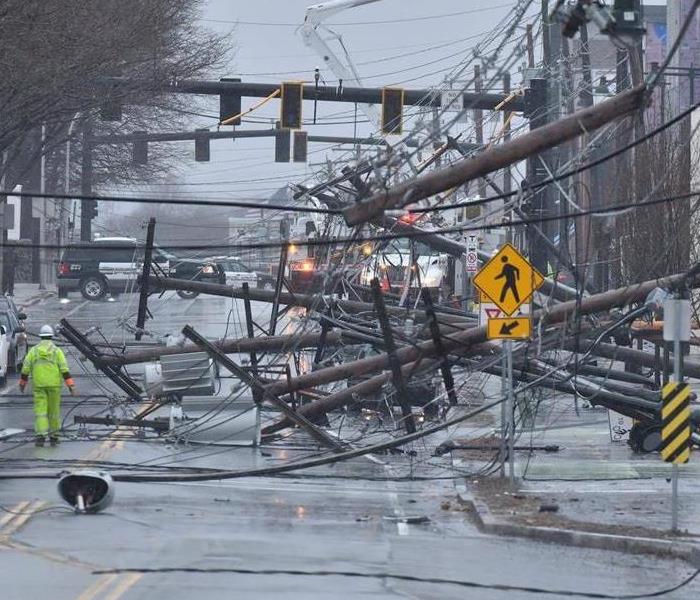 Our highly trained crews are ready to respond 24/7 to storm or flood damage in Essex County.
Our highly trained crews are ready to respond 24/7 to storm or flood damage in Essex County.
SERVPRO of Salem/ Peabody/ Marblehead specializes in storm and flood damage restoration. Our crews are highly trained and we use specialized equipment to restore your property to its pre-storm condition.
Faster Response
Since we are locally owned and operated, we are able to respond quicker with the right resources, which is extremely important. A fast response lessens the damage, limits further damage, and reduces the restoration cost.
Resources to Handle Floods and Storms
When storms hit Salem, Peabody, Swampscott, Marblehead or Middleton we can scale our resources to handle a large storm or flooding disaster. We can access equipment and personnel from a network of 1,650 Franchises across the country and elite Disaster Recovery Teams that are strategically located throughout the United States.
Have Storm or Flood Damage? Call Us Today at 978.744.4545
Nor'Easters!
3/1/2018 (Permalink)
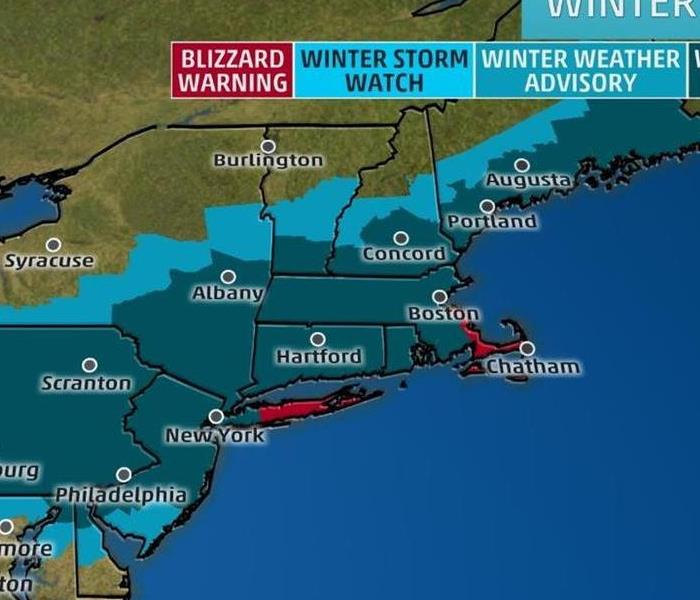 Our highly trained crews are ready to respond 24/7 to storm or flood damage in Salem, Peabody and Marblehead!
Our highly trained crews are ready to respond 24/7 to storm or flood damage in Salem, Peabody and Marblehead!
SERVPRO of Salem, Peabody and Marblehead specializes in storm and flood damage restoration. Our crews are highly trained and we use specialized equipment to restore your property to its pre-storm condition.
Faster Response
Since we are locally owned and operated, we are able to respond quicker with the right resources, which is extremely important. A fast response lessens the damage, limits further damage, and reduces the restoration cost.
Resources to Handle Floods and Storms
When storms hit Salem, Peabody and Marblehead , we can scale our resources to handle a large storm or flooding disaster. We can access equipment and personnel from a network of 1,650 Franchises across the country and elite Disaster Recovery Teams that are strategically located throughout the United States.
Have Storm or Flood Damage? Call Us Today 978.744.4545
Variety of Storm Damage
3/1/2018 (Permalink)
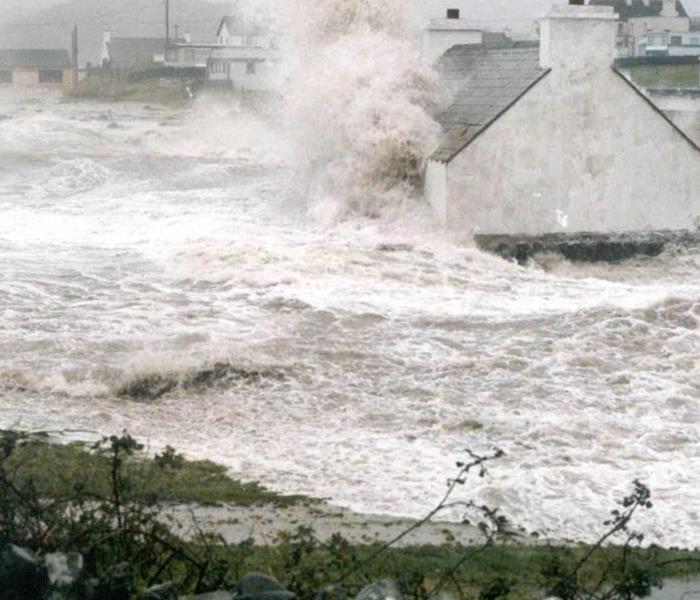 Storm damage can occur in a variety of ways!
Storm damage can occur in a variety of ways!
Wind Damage Restoration
Hurricane damage sometimes includes severe wind damage. Roof damage in this situation may range from a missing roof, to harsh winds and rains shearing away asphalt tiles. Roof repair of obvious defects usually ensues in the wake of hurricane damage. Correcting roof damage may challenge homeowners after a disaster, since a roof leak may not appear obvious.
How can a roof leak and roof damage escape easy detection in this situation? Wind damage may loosen flashing, eventually causing another roof leak weeks after the storm. Even a subtle roof leak of this nature can produce damp, moldy conditions inside the home. Obtaining fast roof repair may prevent long term interior damage. A wind damage home restoration expert may assist clients in receiving comprehensive roof assessments and roof repair services when hurricane damage afflicts an area. Their expertise helps property owners address storm damage and roof damage more effectively.
Flooding And Recovery
Flood water frequently poses a risk in coastal areas. Yet heavy rains may cause river flooding miles inland also. If the surrounding terrain cannot absorb ground water, runoff contributes to flood water. Even residents of mountainous areas sometimes sustain varying degrees of flood damage if frozen pipes rupture. Flood pump failures contribute to basement flooding and contaminated ground water in some locations, too.
Flooding may disrupt municipal water systems. Experts need to assess ground water and evaluate the condition of pipes following flood damage. Hiring a storm restoration firm may allow you to begin your cleanup process even before water restoration occurs. (Cleaning before water restoration often proves essential yet challenging.) By relying upon a trained specialist, you'll usually obtain faster storm remediation. These experts may suggest ways to help mitigate flood water damage in the future, for instance, by requesting backup flood pump installation.
Visit www.SERVPROsalem.com for more information on storm damage.
Contaminated Flood Waters Contain Pathogens and Dangerous Debris
2/7/2018 (Permalink)
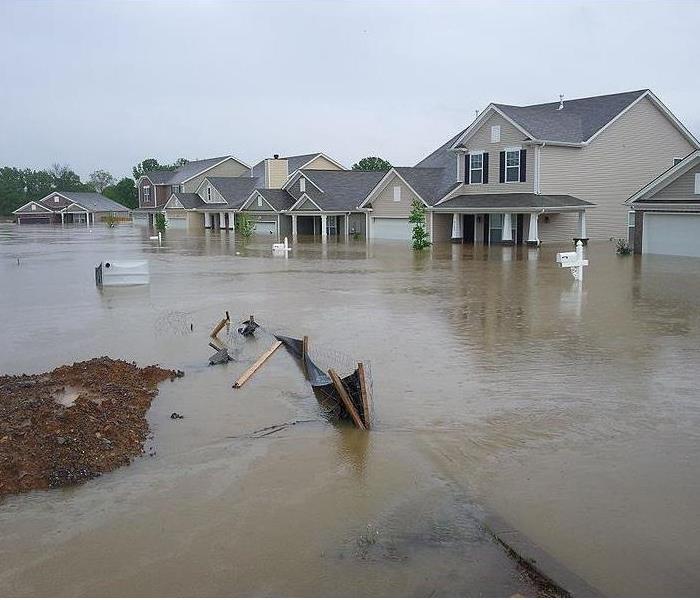 Contaminated flood water needs to be handled carefully.
Contaminated flood water needs to be handled carefully.
When we respond to a case of flood damage due to a storm, one of the most frequent questions our technicians get is, "What is black water?", Black water is heavily contaminated water which is not only unsafe to drink but can also be hazardous simply to be around. It can be difficult to judge conditions in black water due to its typical gray, brown, or black coloration, with small particles often hiding potentially far greater hazards lying within. Here are a few things that can be found in a typical sample of black flood water.
Dirt and Soil: Typically, most of the coloration in black water comes from dirt and soil trapped within. Many cases of flood damage result from heavy storms and rain, and these floodwaters more often than not pick up significant amounts of soil before they ever reach a home. Although this dirt may sound harmless, it, in reality, makes the water much heavier and more difficult to navigate if you get caught in it.
Microorganisms in Black Water: Although the amount and type of organisms in flood can vary depending on its causes and specifics, almost all samples of black water contain very high levels of microorganisms. These may be parasites, bacteria, viruses, mold, or many other types of organism, and they may be able to cause health effects if ingested or absorbed through the skin. This is why it is never advised to drink flood waters and to seek medical attention immediately if you have.
Sharp Metal and Glass: It can be very difficult to see sharp objects in a mass of floodwater, but even if you feel you are confident that such materials are not in the water, it is best always to assume they are. Sharp materials, even if they are tiny, often constitute one of the water's greatest risks. If they open up a small cut or wound, this spot may go unnoticed by you but later on can possibly develop a bad infection. If you have been cut or had black water touch an open wound, immediately disinfect the wound and apply medical aid as needed.
SERVPRO of Salem/Peabody/Marblehead deals with flood damage so that you don't have to. If your home has been caught in a flood, call us at 978.744.4545 for mitigation and restoration services.
Emergency Preparedness: Make a Plan!
2/7/2018 (Permalink)
In recent years, many forms of disasters have affected the United States. Flooding, tornadoes, hurricanes, wildfires, and blizzards are natural disasters that can threaten your home, business, and community.
If you've seen the news, you know that emergencies can happen unexpectedly in communities just like yours, to people like you. We've seen tornado outbreaks, river floods, flash floods, historic earthquakes, tsunamis, and even water main breaks and power outages in U.S. cities affecting millions of people for days at a time.
Here are three steps to help you prepare and plan in the event that you must go for three days without electricity, water service, access to a supermarket, or local services:
1. Get a Kit: Keep enough emergency supplies on hand for you and those in your care - water, non-perishable food, first aid, prescriptions, flashlight, battery-powered radio - for a checklist of supplies, visit www.ready.gov
2. Make a Plan: Discuss, agree on, and document an emergency plan with those in your care. For sample plans, see www.ready.gov - Work together with neighbors, colleagues, and others to help build community resilience.
3. Be Informed: Free information is available to assist you from federal, state, local, tribal, and territorial resources. You can find preparedness information by:
- Accessing www.ready.gov to learn what to do before, during, and after an emergency.
- Contacting your local emergency management agency to get essential information on specific hazards to your area, local plans for shelter and evacuation, ways to get information before and during an emergency, and how to sign up for emergency alerts if they are available.
- Contacting your local firehouse and asking for a tour and information about preparedness.
Police, fire, and rescue may not always be able to reach you quickly, such as if trees and power lines are down, or if they're overwhelmed by demand from an emergency. The most important step you can take in helping your local responders is being able to take care of yourself and those in your care; the more people who are prepared, the quicker the community will recover.
SERVPRO of Salem/Peabody/Marblehead wants you to be aware of the steps to take to help prepare for a natural disaster. For more information on disaster preparedness, visit www.ready.gov, or call SERVPRO of Salem/Peabody/Marblehead; our professionals can help your business prepare for the unexpected by offering an Emergency Ready Profile (ERP). The profile is designed to be a quick and easy snapshot of your business, providing critical facility information needed for detailed emergency preparation. For a customized Emergency READY Plan, contact us at SERVPRO of Salem/Peabody/MArblehead today, at 978.744.4545
When Storms of Floods Hit, SERVPRO is Ready!
10/4/2017 (Permalink)
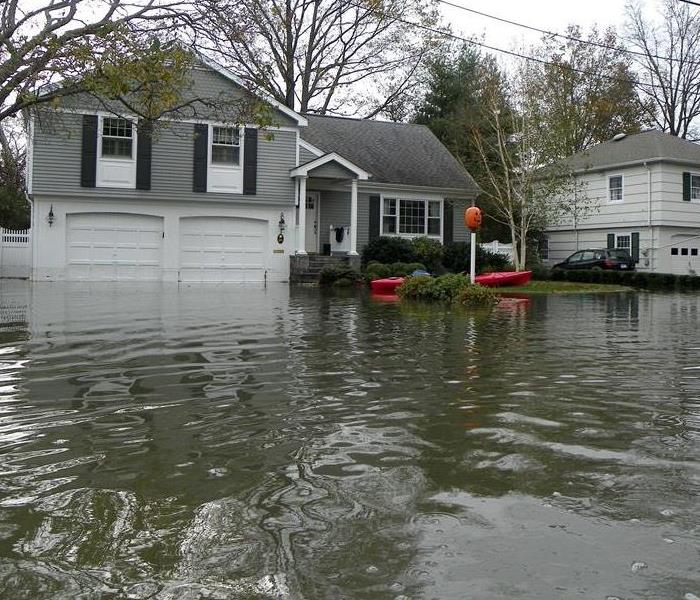 Floods are in the news as the result of Hurricanes Irma and Maria. But floods happen from smaller regional storms as we saw in Lynn MA in Sept.
Floods are in the news as the result of Hurricanes Irma and Maria. But floods happen from smaller regional storms as we saw in Lynn MA in Sept.
SERVPRO of Salem/Peabody/Marblehead specializes in storm and flood damage restoration. Our crews are highly trained and we use specialized equipment to restore your property to its pre-storm condition.
Faster Response
Since we are locally owned and operated, we are able to respond quicker with the right resources, which is extremely important. A fast response lessens the damage, limits further damage, and reduces the restoration cost.
Resources to Handle Floods and Storms
When storms hit eastern Massachusetts we can scale our resources to handle a large storm or flooding disaster. We can access equipment and personnel from a network of 1,650 Franchises across the country and elite Disaster Recovery Teams that are strategically located throughout the United States.
Have Storm or Flood Damage? Call Us Today 978-744-4545
Air Movement Is Vital For Flood Damage
5/23/2017 (Permalink)
Air Movement Is Vital For Flood Damage Repairs
For more than two decades, water damage restorers have been utilizing air moving equipment for the purposes of structural drying. The reason for this is because controlled drying processes depend on evaporation – the transition of liquid water to vapor.
Several different factors influence the rate of evaporation. Most are linked directly to changes in the air around damaged materials. Therefore, the application of air movement at the surface of wet objects is essential for the successful repair of water damage in North Shore homes.
The Control Of Microbial Growth
High powered air movers are very effective when it comes to drying surface water. At SERVPRO, Salem MA they are a critical tool for preventing microbial growth. Practically speaking, if water activity (aw) can be limited to a level below 0.75, the development of microbes is slower. However, if held at a level under 0.65 aw, it is difficult for any microbes to grow, even on the most vulnerable materials.
It means that SERVPRO has to commit to drying all damaged materials in order to reach an equilibrium with an environment below the 0.65 aw cut off. The fastest way to do this is to install air movers and direct clean, dry air over wet surfaces. Crucially, if the exposed surface of hygroscopic substances (plasterboard) get dried quickly but their interior remains wet, microbial growth is still unlikely.
The Even Distribution Of Heat And Air
As the drying process progresses, SERVPRO Salem tightly regulates the humidity, temperature, and airflow within the water damaged space. When air movers get used correctly, they must redirect clean air and support the even distribution of heat to any materials which are still intolerably wet. As the job is nearing completion, the technicians can start to relax humidity and airflow controls, but they must still maintain established drying goals. Moisture tests are carried out periodically to determine how much moisture the materials in the room contain and how long it is likely to take for them to be dried out.
At SERVPRO of Salem MA, we take water damage restoration seriously. By using sophisticated structural drying techniques, our technicians ensure that all excess water, damp, and moisture gets eliminated.
ICE DAM EDUCATION
2/17/2017 (Permalink)
The icicles hanging from your eaves and gutters last year may be a faint memory now. But winter is coming, and along with it one of your home's worst enemies—ice dams. Ice dams are continuous chunks of ice that form along the margins of your roof. While frozen, they're no more trouble than the icicles that hang down. But during the warmer parts of a winter day, water melting off the roof pools behind the ice (Fig. A), then seeps back up under the shingles. Sometimes water can work its way 5 or even 10 ft. back up under the shingles. Eventually it drips through the roof into the soffits (the outside overhangs), walls, and worst of all, onto your ceilings. You'll first see rust spots on drywall fasteners, then perhaps peeling paint, sagging drywall and stains around windows and doors (Fig. A). Insurance companies pay millions of dollars to thousands of homeowners annually to repair the damage. But it's never enough to cover the time and aggravation of getting everything fixed.
Now is the best time to stop ice dams, before winter comes and before they build up. In this article, we'll tell you the best ways to prevent ice dams. And we'll also outline the few options you have once you've got them.
Figure A: How Ice Dams Form
Ice dams occur after heavy snowfall when warm air in the attic causes the roof to warm and the snow to melt. Water running down the roof refreezes when it reaches the colder roof edge, forming a mound of ice. The ice traps meltwater, which can seep back up under shingles and drip through the roof into your house, causing wet and stained ceilings and walls, and peeling paint and rot.
Stop ice dams with a cold roof
Ice dams (and icicles) form when snow melts, runs down your roof and refreezes near the edge. This only occurs when part of your roof warms to above 32 degrees F, warm enough to melt the snow, while the roof edge remains below freezing. This scenario is often the result of a warm attic. In most homes, heat escapes through ceilings into the attic and warms the wood and shingles directly above it (Fig. A). Although the outdoor temperature is below freezing, the snow melts over the warmed section of roof. When the meltwater runs down the roof, it hits the cold edge not warmed by the attic. There it freezes, creating a rim of ice. This rim can grow, trap more water behind it, and bingo—you have a full-fledged ice dam.
The key to preventing ice dams is simply to keep your attic and roof cold. After a snowfall, a cold roof will have a thick blanket of snow. A warmer roof, however, will soon have clear spots where the snow has melted off, and may well have icicles hanging from the eaves.
To keep your roof cold, follow these three steps:
1. Close up attic bypasses
In the average home, about one-third of the heat loss is through the ceiling into the attic. And most of that loss comes from air leaks caused by unblocked walls, gaps in drywall, and cracks around light fixtures, plumbing pipes, chimneys, access hatches and other ceiling penetrations (Fig. A). Air leaks can be tough to stop. You have to climb into your attic, pull or rake back insulation, and plug the leaks using foam, caulk and other methods. Low roof angles make some air leaks difficult to reach. This work is definitely a cool weather project; your attic will be unbearably hot otherwise. Always wear a dust mask, a long-sleeved shirt and long pants to help prevent skin irritations caused by insulation.
Bonus: By stopping air leakage to mitigate ice dams, you'll save energy and reduce both your heating and your air conditioning bills.
2. Measure your attic insulation level
While you're in the attic, check the depth of your attic insulation. Building codes require about 12 to 14 in. of fiberglass or cellulose (Fig. B). Add more if you have less than 8 in. and have had ice dam problems in the past. Blown-in cellulose and fiberglass are usually better than hand-placed batts, because they fill more tightly around rafters, joists and other obstructions, leaving fewer gaps. It's usually worth hiring a professional for this job; you probably won't save much by doing it yourself. However, if you can't find a good price, you can rent a blowing machine from a rental yard or home center. Often, the use of the machine is free with the purchase of insulation.
3. Add roof and soffit vents
Attic ventilation draws in cold outdoor air and flushes out warmer attic air, cooling the attic and the roof in the process (Fig. B). The minimum ventilation area (size of the openings) should be about 1 sq. ft. of vent per 300 sq. ft. of ceiling area (attic floor area), when half the vent area is low on the roof and half is high. Actually figuring all this out is a bit complex; you'd have to examine your existing vents to find the area of each, which is stamped on them. As a rule of thumb, put an 8 x 16-in. vent in the underside of the overhang (soffit) in every other rafter space (Fig. B). (If you're planning to rebuild the soffit, install a continuous 2-1/2-in.-wide “strip” vent, because it will look better.) And install a continuous ridge vent along the peak (Fig. B). If the ridge on your roof is much shorter than the roof edge—on pyramid-shaped roofs, for example—add the common square-shaped roof vents near the peak (Fig. B). Add enough so their ventilating area is about equal to the area of soffit vents. This might deliver a whole lot more ventilation than the minimum requirement, but don't worry. You're unlikely to have too much ventilation.
In addition:
- Some roof types are difficult to vent, especially roofs with angled ceilings and no attic, roofs with skylights, flat roof dormers and low-slope roofs. You may have to rely on the secondary strategies we list in the next section.
- Insulation, especially the blown-in type, can block the airflow (Fig. A). Take a long 1x2 up into the attic with you and poke it through the spaces between rafters over the exterior walls to make sure they're open. Baffles (Fig. B) usually prevent this problem. If you don't have them, add them before installing additional insulation. A shot of air from a compressor hose from the outside will open plugged soffit vents.
- Assessing the venting is tricky on homes that have had aluminum retrofitted over old soffits. If you have persistent ice damming in one area, you might have to remove several aluminum sections to check the venting.
Reminder
Climbing onto your roof can be dangerous. Follow safety procedures.
Keep the roof cold to minimize ice dams. Upgrade attic insulation to about R-40, plug up air leaks to the attic and improve attic ventilation.
What Causes Lighting
2/17/2017 (Permalink)
Lightning is an electric current. Within a thundercloud way up in the sky, many small bits of ice (frozen raindrops) bump into each other as they move around in the air. All of those collisions create an electric charge. After a while, the whole cloud fills up with electrical charges. The positive charges or protons form at the top of the cloud and the negative charges or electrons form at the bottom of the cloud. Since opposites attract, that causes a positive charge to build up on the ground beneath the cloud. The grounds electrical charge concentrates around anything that sticks up, such as mountains, people, or single trees. The charge coming up from these points eventually connects with a charge reaching down from the clouds and - zap - lightning strikes!
Stronger Storms in US
2/2/2017 (Permalink)
The effects of climate change will likely cause smaller but stronger storms in the United States, according to a new framework for modeling storm behavior developed at the University of Chicago and Argonne National Laboratory. Though storm intensity is expected to increase over today's levels, the predicted reduction in storm size may alleviate some fears of widespread severe flooding in the future.
The new approach, published today in Journal of Climate, uses new statistical methods to identify and track storm features in both observational weather data and new high-resolution climate modeling simulations. When applied to one simulation of the future effects of elevated atmospheric carbon dioxide, the framework helped clarify a common discrepancy in model forecasts of precipitation changes.
"Climate models all predict that storms will grow significantly more intense in the future, but that total precipitation will increase more mildly over what we see today," said senior author Elisabeth Moyer, associate professor of geophysical sciences at the University of Chicago and co-PI of the Center for Robust Decision-Making on Climate and Energy Policy (RDCEP). "By developing new statistical methods that study the properties of individual rainstorms, we were able to detect changes in storm frequency, size, and duration that explain this mismatch."
While many concerns about the global impact of climate change focus on increased temperatures, shifts in precipitation patterns could also incur severe social, economic, and human costs. Increased droughts in some regions and increased flooding in others would dramatically affect world food and water supplies, as well as place extreme strain on infrastructure and government services.
Most climate models agree that high levels of atmospheric carbon will increase precipitation intensity, by an average of approximately 6 percent per degree temperature rise. These models also predict an increase in total precipitation; however, this growth is smaller, only 1 to 2 percent per degree temperature rise.
Understanding changes in storm behavior that might explain this gap have remained elusive. In the past, climate simulations were too coarse in resolution (100s of kilometers) to accurately capture individual rainstorms. More recently, high-resolution simulations have begun to approach weather-scale, but analytic approaches had not yet evolved to make use of that information and evaluated only aggregate shifts in precipitation patterns instead of individual storms.
To address this discrepancy, postdoctoral scholar Won Chang (now an assistant professor at the University of Cincinnati) and co-authors Michael Stein, Jiali Wang, V. Rao Kotamarthi, and Moyer developed new methods to analyze rainstorms in observational data or high-resolution model projections. First, the team adapted morphological approaches from computational image analysis to develop new statistical algorithms for detecting and analyzing individual rainstorms over space and time. The researchers then analyzed results of new ultra-high-resolution (12 km) simulations of U.S. climate performed with the Weather Research and Forecasting Model (WRF) at Argonne National Laboratory.
Analyzing simulations of precipitation in the present (2002-2011) and future (years 2085-2094), the researchers detected changes in storm features that explained why the stronger storms predicted didn't increase overall rainfall as much as expected. Individual storms become smaller in terms of the land area covered, especially in the summer. (In winter, storms become smaller as well, but also less frequent and shorter.)
"It's an exciting time when climate models are starting to look more like weather models," Chang said. "We hope that these new methods become the standard for model evaluation going forward."
The team also found several important differences between model output and present-day weather. The model tended to predict storms that were both weaker and larger than those actually observed, and in winter, model-forecast storms were also fewer and longer than observations. Assessing these model "biases" is critical for making reliable forecasts of future storms.
"While our results apply to only one model simulation," Moyer said, "we do know that the amount-intensity discrepancy is driven by pretty basic physics. Rainstorms in every model, and in the real world, will adjust in some way to let intensity grow by more than total rainfall does. Most people would have guessed that storms would change in frequency, not in size. We now have the tools at hand to evaluate these results across models and to check them against real-world changes, as well as to evaluate the performance of the models themselves."
New precipitation forecasts that include these changes in storm characteristics will add important details that help assess future flood risk under climate change. These results suggest that concerns about higher-intensity storms causing severe floods may be tempered by reductions in storm size, and that the tools developed at UChicago and Argonne can help further clarify future risk.
Stronger Storms in US
2/2/2017 (Permalink)
The effects of climate change will likely cause smaller but stronger storms in the United States, according to a new framework for modeling storm behavior developed at the University of Chicago and Argonne National Laboratory. Though storm intensity is expected to increase over today's levels, the predicted reduction in storm size may alleviate some fears of widespread severe flooding in the future.
The new approach, published today in Journal of Climate, uses new statistical methods to identify and track storm features in both observational weather data and new high-resolution climate modeling simulations. When applied to one simulation of the future effects of elevated atmospheric carbon dioxide, the framework helped clarify a common discrepancy in model forecasts of precipitation changes.
"Climate models all predict that storms will grow significantly more intense in the future, but that total precipitation will increase more mildly over what we see today," said senior author Elisabeth Moyer, associate professor of geophysical sciences at the University of Chicago and co-PI of the Center for Robust Decision-Making on Climate and Energy Policy (RDCEP). "By developing new statistical methods that study the properties of individual rainstorms, we were able to detect changes in storm frequency, size, and duration that explain this mismatch."
While many concerns about the global impact of climate change focus on increased temperatures, shifts in precipitation patterns could also incur severe social, economic, and human costs. Increased droughts in some regions and increased flooding in others would dramatically affect world food and water supplies, as well as place extreme strain on infrastructure and government services.
Most climate models agree that high levels of atmospheric carbon will increase precipitation intensity, by an average of approximately 6 percent per degree temperature rise. These models also predict an increase in total precipitation; however, this growth is smaller, only 1 to 2 percent per degree temperature rise.
Understanding changes in storm behavior that might explain this gap have remained elusive. In the past, climate simulations were too coarse in resolution (100s of kilometers) to accurately capture individual rainstorms. More recently, high-resolution simulations have begun to approach weather-scale, but analytic approaches had not yet evolved to make use of that information and evaluated only aggregate shifts in precipitation patterns instead of individual storms.
To address this discrepancy, postdoctoral scholar Won Chang (now an assistant professor at the University of Cincinnati) and co-authors Michael Stein, Jiali Wang, V. Rao Kotamarthi, and Moyer developed new methods to analyze rainstorms in observational data or high-resolution model projections. First, the team adapted morphological approaches from computational image analysis to develop new statistical algorithms for detecting and analyzing individual rainstorms over space and time. The researchers then analyzed results of new ultra-high-resolution (12 km) simulations of U.S. climate performed with the Weather Research and Forecasting Model (WRF) at Argonne National Laboratory.
Analyzing simulations of precipitation in the present (2002-2011) and future (years 2085-2094), the researchers detected changes in storm features that explained why the stronger storms predicted didn't increase overall rainfall as much as expected. Individual storms become smaller in terms of the land area covered, especially in the summer. (In winter, storms become smaller as well, but also less frequent and shorter.)
"It's an exciting time when climate models are starting to look more like weather models," Chang said. "We hope that these new methods become the standard for model evaluation going forward."
The team also found several important differences between model output and present-day weather. The model tended to predict storms that were both weaker and larger than those actually observed, and in winter, model-forecast storms were also fewer and longer than observations. Assessing these model "biases" is critical for making reliable forecasts of future storms.
"While our results apply to only one model simulation," Moyer said, "we do know that the amount-intensity discrepancy is driven by pretty basic physics. Rainstorms in every model, and in the real world, will adjust in some way to let intensity grow by more than total rainfall does. Most people would have guessed that storms would change in frequency, not in size. We now have the tools at hand to evaluate these results across models and to check them against real-world changes, as well as to evaluate the performance of the models themselves."
New precipitation forecasts that include these changes in storm characteristics will add important details that help assess future flood risk under climate change. These results suggest that concerns about higher-intensity storms causing severe floods may be tempered by reductions in storm size, and that the tools developed at UChicago and Argonne can help further clarify future risk.
Hurricane Tips
7/25/2016 (Permalink)
Hurricane Tips
General Hurricane Tips
June to October is Hurricane Season. Below are some tips to follow whether you own a home, RV, boat, car, or all of them! You can see a storm coming by the change in color of the sky (often greenish), large hail, low-flying clouds, and a roar like a freight train.
HOME
It is best to have a plan in place regarding where you are going to go when a hurricane hits. While they may be intriguing to watch, the best place is NOT outside. Your basement or under a set of stairs are great places to wait out the storm. If this is not available, the bottom floor of any building will work.
CAR
Keep your car indoors if possible. Tape up the windows and door with tarps and keep away from any objects that could damage the car if they were to fall on top of it.
During an emergency, gas stations will often be closed, so always make sure you have at least half a tank of gas to get away instantly.
Have enough supplies on hand to wait out 72 hours, just in case help cannot arrive right away. These supplies can also be stored in the trunk (items like a first aid kit, bottled water, non-perishable foods, and medication can stay there at all times.)
Make sure your car is in proper shape. Have a full tank of gas, wiper blades, and tires are ready to go.
Make sure your cell phone is charged and keep your charger with you.
Avoid driving in deep waters.
BOAT
For your boat, remove non-secure items, electronics, excess gear, valuable, and important documents.
Make sure all openings are clear of debris.
Double all lines that are securing your boat to its securing space.
RV
With your RV, do not drive it during the storm as it is more vulnerable to higher/stronger winds.
Make sure you have a full tank of gas, but empty holding tanks, turn off propane cylinders and cover the regulator.
Make sure all documents are in a waterproof bag and with you at all times.
Life can be unpredictable, but having plans in place help you with whatever may come.
As always, once the storm passes, contact: SERVPRO® of Salem, Peabody, Marblehead at 978-744-4545
to help make it “Like it never even happened.”®
www.SERVPROsalem.com
----------------------------------------------------------------------
 Flood damage restoration for your home needs to be handled by SERVPRO. Our team of experts are here to help.
Flood damage restoration for your home needs to be handled by SERVPRO. Our team of experts are here to help.






 24/7 Emergency Service
24/7 Emergency Service





























